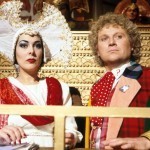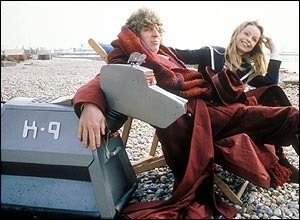Tansy Rayner Roberts's Blog, page 149
January 2, 2011
A Modern Woman's Guide to Classic Who: THE EIGHTH DOCTOR YEARS 1996-
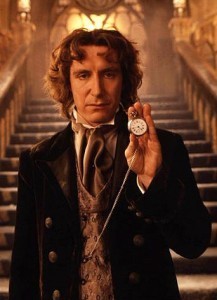 Summary: The Eighth Doctor, played by Paul McGann, is simultaneously the Doctor with the shortest and longest run at the character. He appeared only once, in a pilot TV movie in 1996 (called variously, The Movie, The TV Movie, Doctor Who, and The Enemy Within) which was attempting to repackage Doctor Who for a new TV generation. It failed, in many senses of the word, but the Eighth Doctor himself, as portrayed by McGann, was excellent.
Summary: The Eighth Doctor, played by Paul McGann, is simultaneously the Doctor with the shortest and longest run at the character. He appeared only once, in a pilot TV movie in 1996 (called variously, The Movie, The TV Movie, Doctor Who, and The Enemy Within) which was attempting to repackage Doctor Who for a new TV generation. It failed, in many senses of the word, but the Eighth Doctor himself, as portrayed by McGann, was excellent.
So excellent, in fact that even when it was obvious the TV Movie would go to series, BBC decided to run with the character, doing with him what Virgin had done so successfully with the Seventh Doctor, producing a series of interesting, original SF books with the Doctor and various companions at the centre of the franchise. Telos Publishing were also licensed to produce a series of "deluxe" Doctor Who novellas featuring various Doctors, including the Eighth. As well as utilising some of the same authors that had worked on the Virgin and BBC lines, Telos brought in some well known authors from other areas to write media tie ins for the first time, including Kim Newman, Louise Cooper and Tom Arden.
 Later, when Big Finish launched, the Eighth Doctor got another new lease of life as the "current" Doctor, and Paul McGann was finally allowed to develop the character beyond the 90 minutes that had spawned so much secondary canon. Many of his audio plays were also broadcast on BBC7, including several seasons of stories with companion Lucie Miller. Big Finish also took on the 'Short Trips' anthology series begun by the BBC and continued it as an audio and print series, so that hundreds of new short stories have been published featuring all the Doctors and companions. After 2005, when Christopher Eccleston launched on to our screens and Doctor Who really came back, the Eighth Doctor was sort of 'retired' as the current Doctor and recategorised as a Past Doctor, but in practice this didn't make a lot of difference. Interviewed recently, Paul McGann spoke about how chuffed he was to see his Doctor acknowledged in New Who, because he had assumed he would be considered "not canon".
Later, when Big Finish launched, the Eighth Doctor got another new lease of life as the "current" Doctor, and Paul McGann was finally allowed to develop the character beyond the 90 minutes that had spawned so much secondary canon. Many of his audio plays were also broadcast on BBC7, including several seasons of stories with companion Lucie Miller. Big Finish also took on the 'Short Trips' anthology series begun by the BBC and continued it as an audio and print series, so that hundreds of new short stories have been published featuring all the Doctors and companions. After 2005, when Christopher Eccleston launched on to our screens and Doctor Who really came back, the Eighth Doctor was sort of 'retired' as the current Doctor and recategorised as a Past Doctor, but in practice this didn't make a lot of difference. Interviewed recently, Paul McGann spoke about how chuffed he was to see his Doctor acknowledged in New Who, because he had assumed he would be considered "not canon".
Many writer names turn up again and again, writing for one or more of these series – Russell T Davies himself had written Virgin New Adventures, and he deliberately picked writers for the 2005 launch season who had written for the Doctor during the "Wilderness Years," for Big Finish or Virgin or BBC Books or the Short Trips series, if not many of the above.
The TV Movie occupies a strange space between New and Classic Who. In some ways it was beholden to the past – Paul McGann, for instance, was pushed into a gimmicky old fashioned costume and a long curly wig when he himself declared he wanted to see the Doctor played with a buzz cut and a leather jacket. (that'll never work!) The plot was also stuffed full with quite incomprehensible backstory, which made it hard for new (or let's face it, old) viewers to make sense of it. The Master, the Daleks, the Time Lords, the Eye of Harmony and all manner of random detail was packed in, along with a few things apparently designed to alienate and bewilder the core audience, such as the idea of the Doctor being half human. (wtf?)
At the same time, the production team were trying rather to present Doctor Who as something that fit in with modern TV, in an age of Star Trek DS9, Babylon 5, ER and the X-Files. They wanted an American audience, so they set the story in San Fransisco, added some motorcycle chases, guns and medical drama sequences. While they had the good sense to keep the Doctor British, the rest of the cast were American, including the Master (Eric Roberts). The design was gorgeous, especially the new TARDIS console room, which combined with the Doctor's new costume gave the whole show a steampunk sensibility that the fans would have been all over, twelve years later…
Also, there was kissing. Between the Doctor and the companion. Many of you may be too young, or too New Who, to remember the screams of horror that echoed around the world when the Doctor kissed Grace Holloway. Twice. But believe me, for a few minutes there, the over-reaction eclipsed the sun. Personally I think that those kisses were vital in getting all the bile out of fans' systems so they were ready to be tolerant in 2005… or maybe, you know, fandom just grew up, or something.
The Eighth Doctor was the first one allowed to be romantic, and an object of desire, something that carried into the books and audio plays too. For the most part, he remained aloof and above it all, preserving the illusion that the Doctor was asexual. But it's fair to say that the Doctor-companion sexiness allowed in the current series was well and truly broken in as a concept long before Jack, Nine and Rose started to discuss the concept of dancing.
The Companions: I'm not as fluent with the Eighth Doctor as all the others, as there is simply more material associated with his Doctor than any other, and I haven't read all the books or listened to all the plays. I don't even have a handle on all the companions, but here are some of the highlights:
 Grace Holloway (Daphne Ashbrook) – the companion of the TV Movie. Though she never travelled in the TARDIS, she is very much the POV character for much of the story, and the person who most connects with the Doctor. Her story is actually a clever and rather shocking one, never before dealt with in Classic Who, though one which grows organically from the Doctor's backstory: the Seventh Doctor, now rather aged, steps out of the TARDIS in the middle of a gang war and is accidentally shot. Grace, an ER doctor, then manages to kill him while attempting to save his life, because Time Lord physiology is so different to human. It's a rather marvellous idea, even though the narrative suffers from spending such a long chunk of time on the previous Doctor, instead of getting on with things. Grace then bonds with the strange new Doctor, romping with him in the park and later helping him save the Earth from the Master, who has managed to steal himself a new body…
Grace Holloway (Daphne Ashbrook) – the companion of the TV Movie. Though she never travelled in the TARDIS, she is very much the POV character for much of the story, and the person who most connects with the Doctor. Her story is actually a clever and rather shocking one, never before dealt with in Classic Who, though one which grows organically from the Doctor's backstory: the Seventh Doctor, now rather aged, steps out of the TARDIS in the middle of a gang war and is accidentally shot. Grace, an ER doctor, then manages to kill him while attempting to save his life, because Time Lord physiology is so different to human. It's a rather marvellous idea, even though the narrative suffers from spending such a long chunk of time on the previous Doctor, instead of getting on with things. Grace then bonds with the strange new Doctor, romping with him in the park and later helping him save the Earth from the Master, who has managed to steal himself a new body…
Apart from being an older female companion, always something I enjoy, and a doctor in her own right, Grace has one very important thing going for her: given the opportunity to travel with the Doctor in the TARDIS, she chooses not to. There's a power in that that I respect very much, and it was reflected in Donna's choice in The Runaway Bride. I wonder if, had the series been picked up, it would have been Grace solving mysteries in the hopes of crossing paths with the Doctor again, and miming her pleasure at seeing him again through a glass door…
 Chang Lee (Yee Jee Tso) – given that this character spends most of the movie working for the Master, and very little time on the Doctor's side, it's much harder to justify him being called a companion alongside Grace. But the production team cast and referred to him as being a companion, and considering that this is the first time that a non-white actor has been cast in the role as companion on screen (Roz Forrester was the first non-white companion in the Virgin New Adventures) it seems unfair to rob him of the title. I still can't think of anything interesting to say about him, except that he very much launched the tradition of a male companion being treated as secondary, less interesting & less important than the female companion (both in scripts and in publicity), as seen quite regularly in New Who.
Chang Lee (Yee Jee Tso) – given that this character spends most of the movie working for the Master, and very little time on the Doctor's side, it's much harder to justify him being called a companion alongside Grace. But the production team cast and referred to him as being a companion, and considering that this is the first time that a non-white actor has been cast in the role as companion on screen (Roz Forrester was the first non-white companion in the Virgin New Adventures) it seems unfair to rob him of the title. I still can't think of anything interesting to say about him, except that he very much launched the tradition of a male companion being treated as secondary, less interesting & less important than the female companion (both in scripts and in publicity), as seen quite regularly in New Who.
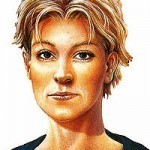 Sam Jones (BBC Books) was the first companion devised for the Eighth Doctor series of original novels. A teenager from Coal Hill School (the same school Susan once attended and Barbara and Ian once taught at), she was a lefty vegetarian with high moral principles, and they had plenty of jolly adventures together, though the BBC books, like the Virgin New Adventures had previously, soon started taking on darker and darker themes. Emotionally, Sam's arc was very similar to that used for Martha Jones in New Who – she developed a mighty crush on the Doctor and at one point left him for three years in order to get over it, and herself. There's also a very complicated plot involving paradoxes and Sam not really being the real version of herself, but I barely remember it now.
Sam Jones (BBC Books) was the first companion devised for the Eighth Doctor series of original novels. A teenager from Coal Hill School (the same school Susan once attended and Barbara and Ian once taught at), she was a lefty vegetarian with high moral principles, and they had plenty of jolly adventures together, though the BBC books, like the Virgin New Adventures had previously, soon started taking on darker and darker themes. Emotionally, Sam's arc was very similar to that used for Martha Jones in New Who – she developed a mighty crush on the Doctor and at one point left him for three years in order to get over it, and herself. There's also a very complicated plot involving paradoxes and Sam not really being the real version of herself, but I barely remember it now.
Fitz Kreiner (BBC Books) joined Sam and the Eighth Doctor for some time and later continued on as a sole companion and paired with Compassion and then Anji Kapoor and Trix, companions I know almost nothing about because I'd stopped reading the books by then. Fitz was a boho, guitar-loving young chap from the 1960's, and he and the Doctor had a great brotherly almost-equals vibe which was very enjoyable to read. I believe Fitz is technically the longest serving companion ever, if you count it in years…
 Iris Wildthyme (BBC Books, created by Paul Magrs, and Big Finish Audio) is a rather batty Time Lady who became his nemesis in a whole new way, by stealing his backstory and stalking him within an inch of his life. I rather adore her, the crazy bag lady of space with her many glamorous past incarnations, and she has been brought to glorious life in Big Finish Audio by Katy Manning, AKA Jo Grant from the Third Doctor Years.
Iris Wildthyme (BBC Books, created by Paul Magrs, and Big Finish Audio) is a rather batty Time Lady who became his nemesis in a whole new way, by stealing his backstory and stalking him within an inch of his life. I rather adore her, the crazy bag lady of space with her many glamorous past incarnations, and she has been brought to glorious life in Big Finish Audio by Katy Manning, AKA Jo Grant from the Third Doctor Years.
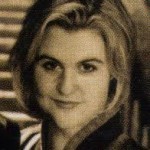 Charley Pollard (India Fisher, Big Finish Audio) – I'm on more familiar ground here! Charley, introduced in Storm Warning, is an "Edwardian adventuress" whose first appearance causes a temporal paradox when the Doctor saves her life instead of letting her die, as she was supposed to, in an airship crash. Charley has developed through her series of audio plays into one of the most iconic and enjoyable companions, and while she also went and fell in love with the Doctor (he's hot, it happens), she didn't brood overly about it, and managed to actually tell him about her feelings without either of them letting it ruin their friendship. When she finally left the Eighth Doctor, believing he had been killed, she was unexpectedly rescued by the Sixth Doctor and travelled with him for quite a while, in the odd situation of knowing more about the Doctor's future than he did. Charley was a lovely match for the Eighth Doctor, bright and jolly and brave but also capable of feeling things quite deeply.
Charley Pollard (India Fisher, Big Finish Audio) – I'm on more familiar ground here! Charley, introduced in Storm Warning, is an "Edwardian adventuress" whose first appearance causes a temporal paradox when the Doctor saves her life instead of letting her die, as she was supposed to, in an airship crash. Charley has developed through her series of audio plays into one of the most iconic and enjoyable companions, and while she also went and fell in love with the Doctor (he's hot, it happens), she didn't brood overly about it, and managed to actually tell him about her feelings without either of them letting it ruin their friendship. When she finally left the Eighth Doctor, believing he had been killed, she was unexpectedly rescued by the Sixth Doctor and travelled with him for quite a while, in the odd situation of knowing more about the Doctor's future than he did. Charley was a lovely match for the Eighth Doctor, bright and jolly and brave but also capable of feeling things quite deeply.
 C'rizz (pronounced Keh-riz, Conrad Westmaas, Big Finish Audios) was a chameleonic alien companion from a universe without time. Shortly after meeting the Doctor in The Kreed of the Cromon, his attempts to rescue the woman he loved go horribly wrong, and he ends up killing her rather than see her live out a life in the monstrous form she had taken on… only, ten minutes later, to watch the Doctor completely save Charley from that same condition. C'rizz travelled with them both for some time, and thanks to the medium of audio, the listeners had the benefit of being aware of the much darker undercurrent going on in his own head, including hearing voices of the people he has killed, beneath the jolly adventures they were all having together. I haven't got to the end of his storyline yet (don't spoil me!) but I don't see this one having a happy ending. It's an interesting attempt to take the Turlough theme of a companion who isn't that nice, and actually DO it – Turlough, when it came down to it, just didn't have the heart of a villain. C'rizz is far more complex.
C'rizz (pronounced Keh-riz, Conrad Westmaas, Big Finish Audios) was a chameleonic alien companion from a universe without time. Shortly after meeting the Doctor in The Kreed of the Cromon, his attempts to rescue the woman he loved go horribly wrong, and he ends up killing her rather than see her live out a life in the monstrous form she had taken on… only, ten minutes later, to watch the Doctor completely save Charley from that same condition. C'rizz travelled with them both for some time, and thanks to the medium of audio, the listeners had the benefit of being aware of the much darker undercurrent going on in his own head, including hearing voices of the people he has killed, beneath the jolly adventures they were all having together. I haven't got to the end of his storyline yet (don't spoil me!) but I don't see this one having a happy ending. It's an interesting attempt to take the Turlough theme of a companion who isn't that nice, and actually DO it – Turlough, when it came down to it, just didn't have the heart of a villain. C'rizz is far more complex.
 Romana II (Lalla Ward, Big Finish Audio), who has been having adventures of her own in the Big Finish universe as the President of Gallifrey, has appeared in several Eighth Doctor stories. Most notably, she and Paul McGann performed in a new version of Shada, the Fourth Doctor story which was never finished thanks to strike action. The script, penned by Douglas Adams, required only minimal changes to explain why the Eighth Doctor was with Romana instead, and in fact her status as President added extra resonance to some of the scenes.
Romana II (Lalla Ward, Big Finish Audio), who has been having adventures of her own in the Big Finish universe as the President of Gallifrey, has appeared in several Eighth Doctor stories. Most notably, she and Paul McGann performed in a new version of Shada, the Fourth Doctor story which was never finished thanks to strike action. The script, penned by Douglas Adams, required only minimal changes to explain why the Eighth Doctor was with Romana instead, and in fact her status as President added extra resonance to some of the scenes.
 Izzy & Destrii (Doctor Who Magazine comic strips) are probably the 8th Doctor companions I'm most familiar with! Izzy was a very cute geek girl packed full of SF and pop culture references who travelled in the comic strip with the Eighth Doctor for many years. I particularly enjoyed her references to Pratchett and the Discworld. Destrii was a renegade fish woman on the run, who swapped her body with Izzy's, and after her apparent death, left Izzy stuck as Fishgirl.
Izzy & Destrii (Doctor Who Magazine comic strips) are probably the 8th Doctor companions I'm most familiar with! Izzy was a very cute geek girl packed full of SF and pop culture references who travelled in the comic strip with the Eighth Doctor for many years. I particularly enjoyed her references to Pratchett and the Discworld. Destrii was a renegade fish woman on the run, who swapped her body with Izzy's, and after her apparent death, left Izzy stuck as Fishgirl.
 Much later, Destrii turned up again in Izzy's body and they swapped back. A little while after Izzy returned home to her family, Destrii herself became the Doctor's companion. Something I only discovered while researching for this post (the one one I've had to research!) is that there were originally plans for DWM to cover the regeneration from Eight into Nine, with Destrii serving as the transition companion in the comics and sticking with the Ninth Doctor for a 'year one' arc. When RTD vetoed the 'year one' idea, not wanting the Ninth Doctor to be shown travelling with anyone but Rose, DWM decided not to depict the regeneration at all.
Much later, Destrii turned up again in Izzy's body and they swapped back. A little while after Izzy returned home to her family, Destrii herself became the Doctor's companion. Something I only discovered while researching for this post (the one one I've had to research!) is that there were originally plans for DWM to cover the regeneration from Eight into Nine, with Destrii serving as the transition companion in the comics and sticking with the Ninth Doctor for a 'year one' arc. When RTD vetoed the 'year one' idea, not wanting the Ninth Doctor to be shown travelling with anyone but Rose, DWM decided not to depict the regeneration at all.
More recently, the Eighth Doctor has been travelling with Lucie Miller (Sheridan Smith) and Tamsin Drew (Niki Wardley) in adventures which have been broadcast on radio as well as available from Big Finish, and has also appeared in several with Susan (Carole Ann Ford) and his great-grandson, Alex Campbell (Jake McGann).
Feminist Heroes: Charley Pollard, President Romana, Izzy & Destrii and what the hell, I'm adding Grace Holloway in there because I think she has been unfairly kicked for being soppy about the Doctor, when (have I mentioned he's really hot?) there was far more to her character in the little time she had to establish herself.
Best Stories To Watch, Read or Listen To:
Well, the TV Movie, obviously. It's bizarre and faily in places but the Doctor himself is awfully lovable, and really… it's one of those things to figure out for yourself. If you've never seen it, it's remarkably not like any other Doctor Who ever, and yet a little bit like all of it. If you *have* seen it before, and want to revisit it apparently the Revisitations Box set version includes a commentary by Sylvester McCoy and Paul McGann and is pretty candid, if that sort of thing appeals to you.
As must be obvious by now, I don't have the same grasp or breadth of this Doctor than the others, because so much of his material was off-TV and I just haven't consumed enough of it. But here are some of the bits and pieces I have really enjoyed over the years.
The Dying Days, by Lance Parkin (Virgin New Adventures novel, 1997)
Benny and the Brigadier come face to face with a strange new Doctor
Seeing I, by Jonathan Blum & Kate Orman (BBC Books 1998)
This is the reinvention of Sam Jones book, a powerful character piece for Sam and the Doctor as well as being hard-boiled political science fiction.
The Scarlet Empress, by Paul Magrs (BBC Books 1998)
Sam and the Doctor are introduced to Iris Wildthyme, a woman who claims to have lived all of the Doctor's own adventures.
Storm Warning (Big Finish Audio, 2001)
The Eighth Doctor meets Charley Pollard in the middle of an air disaster… and a lifelong friendship is formed
Shada (Big Finish Audio, 2003)
Somehow, the Doctor and Romana forgot to go to Cambridge and have this adventure the first time around. But it's never too late!
Fallen Gods, by Jon Blum and Kate Orman (Telos novella, 2003)
A really beautiful story blending the Eighth Doctor with Greek Myth.
Terror Firma (Big Finish Audio, 2005)
The Doctor, Charley and C'rizz return to our universe in the middle of a Dalek invasion, and the Doctor learns from Davros about two companions he never knew he had…
Other Lives (Big Finish Audio, 2005)
The Doctor, Charley and C'rizz visit the Crystal Palace of the Victorian era and all three find themselves caught up in other's people's stories, a tangle of disguises and mistaken identities.
and one I haven't listened to yet but am about to any day now and supremely excited about:
An Earthly Child (Big Finish Audio, 2009)
The Eighth Doctor FINALLY pops back to visit Susan in 22nd century Earth, and get a chance to meet his rebellious grandson Alex.
Previous Posts:
INTRODUCTION
THE FIRST DOCTOR YEARS: 1963-1966
THE SECOND DOCTOR YEARS: 1966-1969
THE THIRD DOCTOR YEARS: 1970-1974
THE FOURTH DOCTOR YEARS: 1975-1981
THE FIFTH DOCTOR YEARS (1982-1984)
THE SIXTH DOCTOR YEARS: 1984-86
THE SEVENTH DOCTOR YEARS: 1987-1989
That's the last of the Classic Who posts – thanks everyone, I wasn't expecting them to be quite so popular! That filled in the Christmas-New Year period nicely, didn't it? If you haven't yet, don't forget to check out the Twelve Doctors of Christmas over at Tor.com. I love that Doctor Who is becoming such a Christmas tradition. Sigh, if only we hadn't already eaten all the shortbread Daleks this year…
January 1, 2011
2010: A Year in Reading
I read a book today! A whole book, from beginning to end. It was so luxurious, I can't tell you.
I also proofed more than 70 pages of my own book, bathed the baby, played a towering blocks game with Raeli, was fed delicious fishy things by my honey, wrote several blog entries, and decorated a pavlova.
If how you spend New Year's Day sets a pattern for the year ahead, I'm doing well!
(apart from the fact that both my girls are currently sobbing, one because she didn't want to go to bed and the other because of some elaborate Thing involving a Christmas decoration, pleasedon'task)
Never mind all that. BOOKS. I read 120 books in 2010 – and overall tackled much longer, harder and more challenging books than I have since… well, probably since before I was pregnant with Raeli. This is not to say I didn't also read my share of YA, graphic novels and children's books, cos I did, but I also read like a grown up. Hooray!
Here is my tiptop list of favourite books I read in 2010:
Non Fiction
Farah Mendlesohn (ed), On Joanna Russ one & two
Russell T Davies & Benjamin Cook, The Writer's Tale: the Final Chapter
Helen Merrick, The Secret Feminist Cabal
Lynne M Thomas & Tara O'Shea (eds), Chicks Dig Time Lords
Joanna Russ, How to Suppress Women's Writing
Sylvia Kelso (ed), The Wiscon Chronicles IV
Clayton Hickman (ed), The Brilliant Book of Doctor Who
(anyone noting the themes here of non fiction I like? It's all Doctor Who and feminism!)
Science Fiction & Fantasy
Connie Willis, Blackout & All Clear
Joanna Russ, The Adventures of Alyx one & two
Malinda Lo, Ash
Cherie Priest, Boneshaker
Jo Walton, Lifelode
Margaret Mahy, The Changeover
Karen Healey, Guardian of the Dead
Gail Carriger, Soulless
Holly Black, The White Cat
Ellen Kushner, The Privilege of the Sword
Sarah Rees Brennan, The Demon's Covenant
Alaya Johnson, Moonshine
Rowena Cory Daniells, The King's Bastard
Amelia Beamer, The Loving Dead
Catherynne M Valente, Palimpsest
Jonathan Strahan (ed), Godlike Machines
Mary Robinette Kowal, Shades of Milk and Honey
Suzanne Collins, The Hunger Games & Catching Fire
Alisa Krasnostein (ed), Sprawl
Lois McMaster Bujold, Cryoburn
Nnedi Okorafor , Who Fears Death
Sandra McDonald, Diana Comet & Other Improbable Tales
Holly Black & Justine Larbalestier (eds), Zombies v. Unicorns
Trent Jamieson, Death Most Definite & Managing Death
N.K. Jemisin, The Hundred Thousand Kingdoms
Sheri S Tepper, Marianne, the Magus & the Manticore
Angela Slatter, Sourdough and other Stories
Stephanie Campisi/Ben Peek, Above/Below
Maureen McHugh, China Mountain Zhang
Nisi Shawl , Filter House
Mira Grant, Feed
Diana Peterfreund, Ascendant
General YA
Libba Bray, Going Bovine
Maureen Johnson, Scarlett Fever
Penni Russon & Kate Constable, Dear Swoosie
Sarah Dessen, Along for the Ride
Ally Carter, Heist Society
John Green & David Levithan, Will Grayson, Will Grayson
Ally Carter, Only The Good Spy Young
Nick Hornby, Slam
Graphic Novels
Shannon Hale & Nathan Hale, Rapunzel's Revenge
Jeph Jacques, Questionable Content Vol I
Lit Stuff & General Fiction
Karen Joy Fowler, The Case of the Imaginary Detective
Deborah Biancotti, A Book of Endings
Poppy Z Brite, The Value of X
Jennifer Chiaverini, The Aloha Quilt
Mostly the thing that leaps out at me is how well I've done at reviewing my favourite books of the year! I wrote plenty of reviews other than these of course, though the majority of reviews I write are of books I really, really enjoyed. I actually feel guilty about the few up there that I didn't review, or haven't yet. It feels… wrong, somehow. Might have to do some catch up posts.
My reading goals for next year are 1) to set about the reading-Agatha-Christie-in-alphabetical-order project and 2) to keep my brain off numbers as much as possible this year and focus on reading the books I really WANT to read, for whatever reason. Wish me luck!
December 31, 2010
A Modern Woman's Guide to Classic Who: THE SEVENTH DOCTOR YEARS: 1987-1989
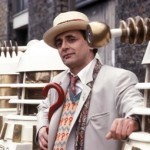 Summary: After the mixed reactions to Colin Baker's Sixth Doctor, and viewing figures continuing to hemorrhage, you would think the most important thing about the Seventh Doctor was that he be likeable. This at least was achieved with the casting of stage actor Sylvester McCoy, who presented an entertaining and harmless figure at the beginning of his run. Producer JNT was still handcuffed to the sinking ship, and rather than learning from past mistakes, he fell back on old habits when launching a new Doctor: a bright, gimmicky costume featuring less-than-subtle question marks, and a personality that could be summed up in sound bytes.
Summary: After the mixed reactions to Colin Baker's Sixth Doctor, and viewing figures continuing to hemorrhage, you would think the most important thing about the Seventh Doctor was that he be likeable. This at least was achieved with the casting of stage actor Sylvester McCoy, who presented an entertaining and harmless figure at the beginning of his run. Producer JNT was still handcuffed to the sinking ship, and rather than learning from past mistakes, he fell back on old habits when launching a new Doctor: a bright, gimmicky costume featuring less-than-subtle question marks, and a personality that could be summed up in sound bytes.
The Seventh Doctor began less than promisingly, with a truly awful regeneration sequence. Colin Baker quite reasonably refused to come back to the show he had loved to film a two minute getting-killed sequence and so the viewers were treated to the sight of the TARDIS under attack by the Rani, a renegade Time Lady introduced in a previous story, and a man in a curly Sixth-Doctor wig falling over in the console room, and immediately regenerating.
Yes, all of you who complain that Ten fell off a long drop in End of Time and didn't die like Four did, take note! Every time the Doctor FALLS OVER without regenerating, he is having a good day.
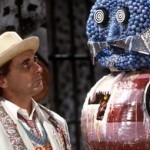 The first season of the Seventh Doctor was full of bright, pantomimey stories. There was far less of the gritty violence that had started edging in during the late Fifth and early Sixth Doctor, though several stories still had fairly adult themes behind the candy cane palette and extreme shoulder pads. Instead of a personality, the Doctor displayed a tendency to roll his 'r's and quote aphorisms wrongly…
The first season of the Seventh Doctor was full of bright, pantomimey stories. There was far less of the gritty violence that had started edging in during the late Fifth and early Sixth Doctor, though several stories still had fairly adult themes behind the candy cane palette and extreme shoulder pads. Instead of a personality, the Doctor displayed a tendency to roll his 'r's and quote aphorisms wrongly…
But it got better. Rather dramatically better. Over the three years McCoy played the Doctor, the character became increasingly subtle, interesting and dare I say it? Crunchy. He showed a darker, more manipulative side, and started to take some responsibility for his own feckless past while at the same time pushing his companion to confront her own demons…
Possibly the hardest thing the fans found to forgive was that Doctor Who was cancelled just as it was getting good again. Really, really good. Damn it.
I have my own biases here. While I was raised, as were many Australian kids of my generation, on a steady diet of repeats of Pertwee and Baker, McCoy was the first Doctor whom I watched live – whose stories were new rather than already having their plots known and written down in a little book. I remember being shown the fiercely orange and pink first episode of Time and the Rani on someone's dodgy pirated VHS and then not getting to see the rest of the story for months, maybe years. It may be that this is (and my mother's refusal to watch the Sixth Doctor when I was young) is the reason that I find even the most wince-making Seventh Doctor stories eminently rewatchable, whereas I have to deeply psych myself up to even look sideways at most of the Sixth.
Or, you know, it could be that the stories were just better!
Things You Need To Know: Sylvester McCoy plays the only Scottish Doctor, despite David Tennant's highest hopes in that regard.
The Companions:
 Mel (Bonnie Langford) didn't really change or develop in her transition to the Seventh Doctor – she still spent most of her time being very perky, putting her hands on her hips and screaming her head off. But as I alluded to last time, I did like the fact that her role in many of the stories was to befriend people, especially other female characters. Even those two ladies who tried to eat her. And her role as companion is completely made worthwhile for the scenes in Time and the Rani in which the very melodramatic and fiercely evil Kate O'Mara has to impersonate kicky, bubbly Mel in order to fool a post-regeneration-befuddled Doctor. Really, you had to be there.
Mel (Bonnie Langford) didn't really change or develop in her transition to the Seventh Doctor – she still spent most of her time being very perky, putting her hands on her hips and screaming her head off. But as I alluded to last time, I did like the fact that her role in many of the stories was to befriend people, especially other female characters. Even those two ladies who tried to eat her. And her role as companion is completely made worthwhile for the scenes in Time and the Rani in which the very melodramatic and fiercely evil Kate O'Mara has to impersonate kicky, bubbly Mel in order to fool a post-regeneration-befuddled Doctor. Really, you had to be there.
I liked Mel best in Delta and the Bannermen, a truly batshit crazy 1950's romp with aliens, and she does her best to keep the story grounded – the only person, for instance, who openly mourns the death of a busload of people. I also liked her very much in Dragonfire, finding the Doctor a new companion in stranded, cranky teenage waitress Ace so that Mel can hop aboard Sabalom Glitz's mighty vessel instead (oh yes, I went there). Though Mel's manner of leaving is as casual as her arrival, I do rather love her line "Who said anything about home? I'm got much more crazy things to do yet." There's something very empowering about a companion who chooses to leave the Doctor and move on… to more adventures. I rather hope that when Amy and Rory go, it's something along those lines.
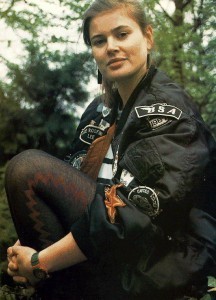 Ace (Sophie Aldred) was a completely new kind of companion. While we saw glimpses of the modern companion arc in Jo, Tegan and others, it was only with Ace that we finally got something of a satisfactory emotional arc. When the Doctor meets Ace, she's a mouthy, rebellious teenage girl who likes to blow things up, and ended up stuck on a space station after a home-brewed chemistry experiment went really, REALLY wrong.
Ace (Sophie Aldred) was a completely new kind of companion. While we saw glimpses of the modern companion arc in Jo, Tegan and others, it was only with Ace that we finally got something of a satisfactory emotional arc. When the Doctor meets Ace, she's a mouthy, rebellious teenage girl who likes to blow things up, and ended up stuck on a space station after a home-brewed chemistry experiment went really, REALLY wrong.
Which is of course, complete rubbish. Much like those big empty rooms in Amy Pond's house, the Doctor can see right away that there's something wrong with Ace, something that doesn't add up, and over the next two years, he takes great pains in investigating every corner of her life and her past: her grandmother's past, the haunted house that haunts her still, even why she's afraid of clowns. Rather fittingly, the final story of the Seventh Doctor Years had him returning Ace to her home – not to put her back there, but so she could confront her issues, and move on.
It's… not always done well. There were some fantastic ideas in the stories of this era, and that whole previous paragraph is indicative of the kind of credit that Seventh Doctor fans tend to give the production team of that time. It all sounds terribly clever – but half the time, it didn't work. There was a lot of dramatic pontificating, a lot of moody staring into the distance, and a lot of over-editing that left several stories making little to no sense despite awesome spooky atmosphere. And what the hell was the deal with taking Ace back to her childhood home and not having us meet the person who most screwed her up, her mother?
But the heart of it – the chemistry between Aldred and McCoy, the lovely character scenes and culture clashes between them, the fond rather than grating snark, the bold story ideas and alien planets and the splendid conceit that, in another universe, the Doctor is Merlin ("I hate good wizards in fairy tales," says River, "they always turn out to be him."). It's as special as the the other most dynamite Doctor-companion pairings, such as Four-Sarah, Four-RomanaII, Three-Jo, Two-Jamie, or One-Susan-Ian-Barbara. It's magic.
For the first time, and this is why these stories still resonate with me even though I can now spot the storytelling failures a mile off, it really felt like this was the companion's story, not just the Doctor's. Ace pointed the way towards Rose and Martha and Donna and especially to Amy Pond. The seeds of New Who were planted in 1989.
(though apparently they had some bizarre ideas about turning her into a Time Lord in her next season, so it could be a good thing the plug was pulled when it was)
Feminist Heroes: Ace, Ace, Ace and Ace. She's sixteen wears a bomber jacket, she invented her own bombs (nitro-9!) in deodorant cans which she carries around in her backpack, and she beat a Dalek to death with a baseball bat. OH YES SHE DID.
Best Stories To Watch:
 Title: Delta and the Bannermen (1987)
Title: Delta and the Bannermen (1987)
Featuring: the Seventh Doctor, Mel
Why Watch: this is a loopy space adventure that packs six episodes worth of plot into three episodes of banter, glitter and 50's music. We get intergalactic bus tours, a blonde space princess on the run from sinister leather-clad warlords, and the whole thing smashes delightfully into the middle of a Welsh holiday camp. With an emphasis on camp. There's songs, romance and green babies. Billy and his Vincent! (that's a motorbike, not Van Gogh) Rae and her inexplicable Welshisms! I love this story with the power of a thousand suns and you cannot take it away from me no matter how many plot holes you point to.
Or Not: This one's an acquired taste, I'll admit. And the taste is 1950's cherry cola! Welsh cherry cola!
Category: Historical with Aliens
If You Like This You May Like: Dragonfire.
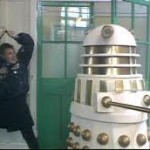 Title: Remembrance of the Daleks (1988)
Title: Remembrance of the Daleks (1988)
Featuring: The Seventh Doctor, Ace, Daleks
Why Watch: This isn't the first time that the Doctor went back to Totters Lane, the junkyard where the TARDIS was parked back in 1963, but this is the time he got it right. It's a lovely period piece, and Ace's first real trip in the TARDIS. The Daleks get a seriously creepy human component, and Ace wields her baseball bat. All this and a story that doesn't shy away from emotional connection as well as action. Probably the best Seventh Doctor story ever.
Category: Historical with Aliens. Well, you know. Daleks.
If You Like This You May Like: The Happiness Patrol, Greatest Show in the Galaxy
 Title: The Curse of Fenric (1989)
Title: The Curse of Fenric (1989)
Featuring: The Doctor, Ace, haemovores
Why Watch: Another of those atmospheric period pieces this era does so well, this one gives us World War espionage, codebreaking machines, vampires and extreme creepiness. Apart from being a great character story for Ace, and having lots of female characters in it, this also has a rather marvellous explanation about why vampires can be held at bay by a cross, regardless of whether they believe in the Christian mythos.
Category: Historical with… something
If You Like This You May Like: Battlefield, Ghost Light, Survival. Battlefield's the Arthurian one with the return of an elderly Brigadier & Jean Marsh as Morgaine; Survival's the one in Ace's home suburb with the Master teaming up with a planet full of cat people.
"There are worlds out there where the sky is burning, and the sea's asleep, and the rivers dream; people made of smoke and cities made of song. Somewhere there's danger, somewhere there's injustice, somewhere else the tea's getting cold. Come on, Ace. We've got work to do. "
The Doctor, Survival (1989)
Extra, extra:
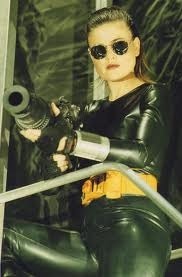 The Seventh Doctor has had several leases of life beyond the TV show. In the licensed Virgin New Adventures (1991-1997), a host of great writers continued the adventures of the Doctor and Ace, later adding other companions such as Bernice Summerfield, Chris Cwej and Roz Forrester. Given a fairly loose reign, and with an adult reading audience, these novels became renowned for being of far greater interest and quality to just about any other media tie ins – mostly because they could distance themselves from the limitations of their source material, and they were allowed to develop and change the characters rather than hitting the reset button. Under the ministrations of such writers as Paul Cornell, Russell T Davies, Kate Orman, Gary Russell, Ben Aaronovitch and Mark Gatiss, among others, the Seventh Doctor explored his dark side, and Ace grew up.
The Seventh Doctor has had several leases of life beyond the TV show. In the licensed Virgin New Adventures (1991-1997), a host of great writers continued the adventures of the Doctor and Ace, later adding other companions such as Bernice Summerfield, Chris Cwej and Roz Forrester. Given a fairly loose reign, and with an adult reading audience, these novels became renowned for being of far greater interest and quality to just about any other media tie ins – mostly because they could distance themselves from the limitations of their source material, and they were allowed to develop and change the characters rather than hitting the reset button. Under the ministrations of such writers as Paul Cornell, Russell T Davies, Kate Orman, Gary Russell, Ben Aaronovitch and Mark Gatiss, among others, the Seventh Doctor explored his dark side, and Ace grew up.
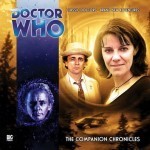 Bernice "Benny" Summerfield – a hard drinking 30 something archaeologist with a bad taste in men, created by Paul Cornell – broke the mould of the Doctor Who companion all over again, proved to be such a popular and iconic character that she continued in her own series of books and later audio plays even after Virgin's license for publishing novels set in the Doctor Who universe ran out. It has been pointed out by many that she bears quite a resemblance to River Song, and there's certainly an argument for that if you only look at their character profiles.
Bernice "Benny" Summerfield – a hard drinking 30 something archaeologist with a bad taste in men, created by Paul Cornell – broke the mould of the Doctor Who companion all over again, proved to be such a popular and iconic character that she continued in her own series of books and later audio plays even after Virgin's license for publishing novels set in the Doctor Who universe ran out. It has been pointed out by many that she bears quite a resemblance to River Song, and there's certainly an argument for that if you only look at their character profiles.
 After a brief appearance in the 1996 TV Movie in which Sylvester McCoy reprised his role as an aging Seventh Doctor in order to meet his death and regenerate into the Eighth, his character continued only a little longer in the Virgin New Adventures, and the final volume of this series showed Benny Summerfield coming face to face with the Eighth, newly regenerated Doctor. The BBC then chose to use the publishing rights themselves, copying the format that Virgin had created of one line of continuity with the current Doctor (now 8 rather than 7) and a second line of Past Doctor Adventures. Now officially a Past Doctor, the Seventh appeared in several of these, mostly with Ace. These were presumed to take place in between the TV adventures, and so the continuity and character development of the Virgin series was lost, though readers could still pretty much fit the "canons" of all the books together, even though it was getting quite suspicious that quite so many adventures had happened "offscreen" if you thought too hard about it.
After a brief appearance in the 1996 TV Movie in which Sylvester McCoy reprised his role as an aging Seventh Doctor in order to meet his death and regenerate into the Eighth, his character continued only a little longer in the Virgin New Adventures, and the final volume of this series showed Benny Summerfield coming face to face with the Eighth, newly regenerated Doctor. The BBC then chose to use the publishing rights themselves, copying the format that Virgin had created of one line of continuity with the current Doctor (now 8 rather than 7) and a second line of Past Doctor Adventures. Now officially a Past Doctor, the Seventh appeared in several of these, mostly with Ace. These were presumed to take place in between the TV adventures, and so the continuity and character development of the Virgin series was lost, though readers could still pretty much fit the "canons" of all the books together, even though it was getting quite suspicious that quite so many adventures had happened "offscreen" if you thought too hard about it.
In 1999, Big Finish audios began, doing much the same as the book series had done: a regular line of stories in a single continuity featuring the "current" (still  Doctor and a whole lot of past adventures featuring those Doctors whose actors were still alive and willing to return to the part: predominantly 5, 6 and 7.
Doctor and a whole lot of past adventures featuring those Doctors whose actors were still alive and willing to return to the part: predominantly 5, 6 and 7.
In the Big Finish plays, which began as one off stories here and there, whole new lines of continuity began to emerge. Most notably, as touched on before, the creation of new companions. Peri and the Fifth Doctor travelled with Erimem for years, Turlough and Nyssa both got long stretches as solo companions as well as with occasional others, the Sixth Doctor not only travelled with Mel and Peri but also with Evelyn, Charley and Jamie… and the Seventh Doctor and Ace, after many audio adventures on their own, themselves picked up a fellow traveller called Thomas Hector "Hex" Schofield.
 I'm a huge Hex fan – he's one of the reasons that I'm (damn it) now following whole lines of continuity as I purchase (damn it) so many Big Finish plays. A Liverpudlian nurse from the near-future, he rounds out the TARDIS crew nicely, and while Ace's growing-up-curve isn't quite as dramatic as it was in the New Adventures, we are definitely getting a more mature, experienced version of the character. Hex and Ace have some lovely banter, but at the same time there is an undercurrent that suggests that she is becoming more like the Doctor (alien traveller with a hint of manipulating) than like her fellow human. I am really excited to see how far their story goes together. My favourites so far are The Harvest (Hex's debut) and the really excellent Live 34.
I'm a huge Hex fan – he's one of the reasons that I'm (damn it) now following whole lines of continuity as I purchase (damn it) so many Big Finish plays. A Liverpudlian nurse from the near-future, he rounds out the TARDIS crew nicely, and while Ace's growing-up-curve isn't quite as dramatic as it was in the New Adventures, we are definitely getting a more mature, experienced version of the character. Hex and Ace have some lovely banter, but at the same time there is an undercurrent that suggests that she is becoming more like the Doctor (alien traveller with a hint of manipulating) than like her fellow human. I am really excited to see how far their story goes together. My favourites so far are The Harvest (Hex's debut) and the really excellent Live 34.
Previous Posts:
INTRODUCTION
THE FIRST DOCTOR YEARS: 1963-1966
THE SECOND DOCTOR YEARS: 1966-1969
THE THIRD DOCTOR YEARS: 1970-1974
THE FOURTH DOCTOR YEARS: 1975-1981
THE FIFTH DOCTOR YEARS (1982-1984)
THE SIXTH DOCTOR YEARS: 1984-86
The Shape of 2011.
I guess I've done this enough that it's a tradition – rather than elaborate or ambitious goals, I'm going to set out a wishlist for the year, mostly things I expect to happen, am looking forward to, or would really like to make happen.
In no particular order.
1. Page proofs and copy edits to be done for Shattered City and Reign of Beasts
2. Write a first draft of Fury, before ROR in September.
3. Send in proposal for Fury to my agent to sell before it's finished.
4. Volunteer regularly at Raeli's schol
5. Launch Shattered City in April and do my best to contribute to & support the publicity for the book.
6. Swancon in April!
7. My quartet of stories from Twelfth Planet Press – publishing date is to be announced but I am hoping for this year, and will do my best to contribute to & support the publicity for the book.
8. ROR in September!
9. Launch Reign of Beasts in October (subject to publishing dates staying the same) and do my best to contribute to & support the publicity for the book.
10. Double the number of Galactic Suburbia podcasts we have out there.
11. Make regular time for craft projects and quilting, because it makes me happy.
12. Read for enjoyment and perspective on the field rather than playing a numbers game this year. But having said that…
13. I want to get started on the Read Agatha Christie In Order project! Kathryn, are you still up for joining me? I had a sack of the things delivered from a friend's collection…
14. Write something that surprises me.
The Shape of 2010 (how it was)
So this loosely was my plan for 2010, presented with comments:
1. Finish Cabaret of Monsters (book 2) and Saturnalia (book 3) and submit them on deadline.
They're now called Shattered City and Reign of Beasts, and the deadlines ended up being extended a time or two, but done and done.
2. Complete a first draft of one other novel
This I didn't manage, thanks to more editing and a lot less writing time than I was hoping for.
3. Decide on what project I want to work on after Creature Court and put a proposal together.
I haven't finished the proposal for my publishers yet, but I wrote early chapters and a synopsis for Fury when I applied for my grants, WHICH I GOT.
4. Get Raeli through her first year of full time school. To this end, institute earlier tea & earlier bedtime for Raeli (starting the bedtime process at 8pm results in a good night going to sleep at 9pm, it's not good enough)
This worked out really well. While part of me thinks it's a bad idea to dumb down Raeli's food and getting into the habit of a kids meal and an adult meal… yeah. I can't have a family meal on the table by 6pm, but I can manage a nursery tea. Also it's nice to not be fighting with Raeli about food. She eats vegetables, even if only under certain circumstances, and she even went through a few adventurous phases with her food this year. It's summer so we've let the bedtime blow out again but come school time, I'll be going back to this habit.
5. Get Jem into her own room and reorganise study at other end of house.
Done marvellously. What I wasn't expecting was that instead of a study I would build myself a library! Complete with queen sized bed… I love that I got the best of both worlds, a spare room for guests and a room that is MINE where my books live. Sure, I don't have a desk, but this is me, let's face it, a desk would just be somewhere to pile up papers and all kinds of crap. Not having a desk forces me to file things occasionally. I've finally got my armchair, and I continue to work from my laptop on the dining table. I may need a small desk in the library eventually but for right now, I'm happy, and get an extra thrill of happiness whenever I refer to my Library Bed. Which currently is covered with page proofs for Shattered City…
6. Complete two quilts (you know who you are)
I really have to be more specific! The first must have been the Felix Rupert Bear quilt, which I was being discreet about because I was keeping it secret from Isabel. I had to check back for the second which was of course Kaia's Comfort Fruit quilt, for her 30th birthday.
7. Launch Power and Majesty in June, and do my best to contribute to & support the publicity for the book.
Done! With publicity you always feel like you should have done more, but I think I managed my time effectively. Time to start gearing up for Book 2…
8. Aussiecon in September!
Done! It wasn't easy taking the family to the convention, but my honey worked hard to free up as much time as possible for me to do my convention thing, and I loved getting to hang out with friends and sharing both my worlds. Also, live Boxcutters!
9. Launch Cabaret of Monsters in December (subject to publishing dates staying the same) and do my best to contribute to & support the publicity for the book.
Heh well the publishing dates didn't stay the same, so this one can be rolled over to 2011.
10. Read 120 books throughout 2010.
Hooray, I scraped under the wire with this one! Separate reading overview to follow.
EDIT: A couple of projects/challenges I forgot about: to podcast Siren Beat, and to read all of Joanna Russ's published books.
Heh well I completely didn't podcast Siren Beat, but I did start the CreatureCourtCast to read some sample chapters of Power and Majesty, and should do something similar with Book 2. And I didn't get to all of the Russ, but I read quite a few of them and consider myself a hell of a lot more educated in the ways of Joanna Russ than at this time last year. So I'll count that as a win.
Of course the most interesting thing about looking back is what I didn't expect or prepare for: like winning the WSFA small press award for Siren Beat, and getting to vicariously enjoy Alisa's voyage to Washington and beyond. Also, when the year turned, I had no idea that we were going to start Galactic Suburbia this year, a podcast that has given me great pleasure and joy. I didn't know that Raeli being at school would lead to a whole new social group for me, or that my biggest regret of the year was not the lack of working time, but not volunteering enough at Raeli's school. It's also been lovely seeing so many of my friends succeeding with their work, getting new books out into the world, more rungs on the publishing journey. In particular, seeing Trent finally get his debut novel out there after so many years of hard work towards that goal, and seeing Rowena get another series out there after a hiatus almost as long as my own, filled me with pride and gladness.
It's been a year of hard work, rewarding feedback, loving friends and family. I really have very little to complain about. Here's hoping 2011 is a good one, for all of us!
December 30, 2010
A Modern Woman's Guide to Classic Who: THE SIXTH DOCTOR YEARS: 1984-86
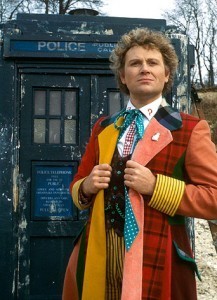 Summary: This is the point where a lot of Doctor Who fans walked away. In all fairness to Colin Baker, there are a lot of reasons why this era just… isn't very good, and despite many fans blaming him, it has little to do with his performance. A few very bad scripts, however, and equally bad production decisions (such as an awful costume, and the 'edgy' concept of the new Doctor starting out by trying to strangle his companion) got the Sixth Doctor Years off to a very bad start.
Summary: This is the point where a lot of Doctor Who fans walked away. In all fairness to Colin Baker, there are a lot of reasons why this era just… isn't very good, and despite many fans blaming him, it has little to do with his performance. A few very bad scripts, however, and equally bad production decisions (such as an awful costume, and the 'edgy' concept of the new Doctor starting out by trying to strangle his companion) got the Sixth Doctor Years off to a very bad start.
After one very awkward and uneven season, Doctor Who was put on a hiatus for 18 months. Forces at the BBC were working hard to cancel the show. When it returned with season long arc based around the theme of the Doctor on trial, much had been improved from the last disastrous season, but in many ways it was too little, too late. Colin Baker was pushed out, and there were calls for a recast in a last ditch effort to save the show…
Things You Need To Know:
Colin Baker did not choose the outfit.
The Companions:
 Introduced only two stories before the end of the Fifth Doctor's run, Peri Brown (Nicola Bryant) was understandably shocked when her sweet, affable Doctor turned into a snarky, pompous bully. Also, though the actress was British, the choice had been made to make her American, in the hopes of appeasing overseas viewers (seriously, take it from an Australian who had little time for Tegan, this is always a bad idea). Mild conflict between Doctor and companion had often worked well – with Ian and Barbara, Liz, Sarah, Romana… and had already been overdone with Tegan. With the Sixth Doctor and Peri, it was just unpleasant to witness, like two people who really didn't like each other, forced into each other's company.
Introduced only two stories before the end of the Fifth Doctor's run, Peri Brown (Nicola Bryant) was understandably shocked when her sweet, affable Doctor turned into a snarky, pompous bully. Also, though the actress was British, the choice had been made to make her American, in the hopes of appeasing overseas viewers (seriously, take it from an Australian who had little time for Tegan, this is always a bad idea). Mild conflict between Doctor and companion had often worked well – with Ian and Barbara, Liz, Sarah, Romana… and had already been overdone with Tegan. With the Sixth Doctor and Peri, it was just unpleasant to witness, like two people who really didn't like each other, forced into each other's company.
Peri, supposedly a botany student, was given little development after her first story, and there was no follow through on her family or point of origin. Nicola Bryant (who personally won my heart when she played Blackadder's shrill niece in Blackadder's Christmas Carol) was given very little to work with.
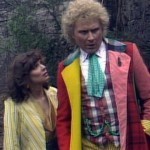 Apparently the gentler, more amiable tone evident between the Sixth Doctor and Peri during Trial of a Time Lord was a conscious choice by the actors, and it paid off – their scenes together in The Mysterious Planet are rather adorable. Also, Peri was allowed to wear grown up clothes! Sadly, it was the beginning of the end. Peri was written out under shocking circumstances in the second Trial story Mindwarp, murdered so that her body could be inhabited by another character. Even worse was the skeezy retcon a few episodes later so that instead of being killed, she actually ended up married to King Ycarnos, the freaky barbarian warrior brute who had been licking his lips over her the whole time, and whom she had shown no romantic interest in whatsoever. Sure it's nice that Peri's not dead and all, but I personally was furious the Doctor's first response wasn't to go rescue her the hell away from that blatantly stockholm syndrome relationship. When I was TEN I could tell there was something seriously wrong there.
Apparently the gentler, more amiable tone evident between the Sixth Doctor and Peri during Trial of a Time Lord was a conscious choice by the actors, and it paid off – their scenes together in The Mysterious Planet are rather adorable. Also, Peri was allowed to wear grown up clothes! Sadly, it was the beginning of the end. Peri was written out under shocking circumstances in the second Trial story Mindwarp, murdered so that her body could be inhabited by another character. Even worse was the skeezy retcon a few episodes later so that instead of being killed, she actually ended up married to King Ycarnos, the freaky barbarian warrior brute who had been licking his lips over her the whole time, and whom she had shown no romantic interest in whatsoever. Sure it's nice that Peri's not dead and all, but I personally was furious the Doctor's first response wasn't to go rescue her the hell away from that blatantly stockholm syndrome relationship. When I was TEN I could tell there was something seriously wrong there.
 Mel (Bonnie Langford), the companion introduced in the second half of the Trial of a Time Lord season, has perhaps inspired more fan-induced bile and dislike than any other companion… yes, even Adric. From what I can make out, this was largely due to Bonnie Langford's prior work as a stage musical star and child actress specialising in obnoxious tykes. There was also a lot of the 'oh god she's not going to sing, is she?' vibe that we also heard when Billie Piper and Kylie Minogue were cast.
Mel (Bonnie Langford), the companion introduced in the second half of the Trial of a Time Lord season, has perhaps inspired more fan-induced bile and dislike than any other companion… yes, even Adric. From what I can make out, this was largely due to Bonnie Langford's prior work as a stage musical star and child actress specialising in obnoxious tykes. There was also a lot of the 'oh god she's not going to sing, is she?' vibe that we also heard when Billie Piper and Kylie Minogue were cast.
Personally I always rather liked Mel. Sure, she was terribly peppy, and reeks of every 1980's cliche you can imagine (she's an exercise freak with a high toggled pony tail who listens to electronic music and wears polkadots) but that worked a lot better with Colin Baker's Doctor than Peri's world-weary snark. She transitioned very well to the Seventh Doctor, despite having some truly awful stories, and had a pleasant habit of befriending other female characters in her stories. Revolutionary! Also, her scream came second only to that of Leatherlungs Victoria.
Mel was a computer programmer, a detail almost never referenced on screen, and she has the rather odd distinction of being the only companion (apart from Susan) who does not get an introductory story. We first meet her when the Doctor presents a case in court from his own future, in which Mel is already settled as his companion.
There are two other regular members of the cast in the Trial season: Lynda Bellingham as the wise and elegant Inquisitor (ie the judge) and Michael Jayston as the Valeyard (counsel for the prosecution). Both give brilliant performances, and the interplay between the two of them and the Sixth Doctor makes the framing narratives far more interesting to me than the stories they are meant to introduce.
Feminist Heroes: The Inquisitor
Best Stories To Watch:
 Title: The Two Doctors
Title: The Two Doctors
Featuring: The Sixth Doctor, Peri, The Second Doctor, Jamie
Why Watch: while this one has a rather gross premise, it also has its marvellous moments. The Second Doctor and Jamie cross paths with his future self and the gang romp around Spain, avoiding some icky gourmand aliens who fancy eating themselves up some delicious humans… or Gallifreyans! Apart from the pretty Spanish countryside, this one is especially enjoyable for teaming up the Sixth Doctor and Jamie, and the return of Patrick Troughton being awesome. Jacqueline Pearce also guest stars as the villainous Chessene – don't know about anyone else, but after Servalan I find it hard to take her seriously with hair!
Category: Contemporary
If You Like This You May Like: Eh. Maybe Vengeance on Varos? Or you could just skip ahead to…
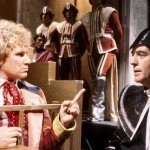 Title: Trial of a Time Lord (The Mysterious Planet, Mindwarp, Terror of the Vervoids, The Ultimate Foe)
Title: Trial of a Time Lord (The Mysterious Planet, Mindwarp, Terror of the Vervoids, The Ultimate Foe)
Featuring: The Sixth Doctor, Peri, Mel, The Valeyard, The Inquisitor, The Master
Why Watch: the best of the Sixth Doctor, this season has its highs and lows but viewed as a whole is an interesting and epic journey. The Mysterious Planet has the benefits of a Robert Holmes script, Mindwarp has… Brian Blessed shouting, Terror of the Vervoids has… Honor Blackman and some aliens who look like genitalia…. oh, who am I kidding? I loved the final two parter as a kid, with all its Dickensian surrealism and the return of Sabalom Glitz, a character I really enjoyed in Mysterious Planet, but I admit looking back on it with adult eyes, it doesn't actually make any sense whatsoever.
Or Not: Yeah, seriously, no one will judge you if you go back and watch the The Green Death again instead.
Category: Space Opera, Mad Science, Robots and Murderous Plants and Surrealism, Oh My
If You Like This You May Like: Lying Down Until It Goes Away.
 Extra, extra: Here's where it gets good. In the Big Finish audio plays, away from the strange tastes of John Nathan Turner, the awful suit and anything to do with the scrips of Pip and Jane Baker, the Sixth Doctor actually gets a chance to be… good. More than good. Something akin to awesomecakes. Big Finish made some great choices including the selection of some interesting, different companions, witty dialogue, and… well, you know, it's amazing the difference it makes to not have to look at that coat all the time. Some particularly brilliant Colin Baker plays include Jubilee, Arrangements for War, and Davros, and the more recent trilogy beginning with City of Spires. I particularly like the stories that feature Evelyn Smythe, the first time we have really had an old companion – her relationship with the Doctor is splendid and crunchy. City of Spires and the plays that follow it reconnect the Sixth Doctor with Jamie, and they make a great combination. I haven't yet listened to the season which paired the Sixth Doctor with Charley Pollard, formerly an 8th Doctor companion, but I love Charley so I'm sure they're great too.
Extra, extra: Here's where it gets good. In the Big Finish audio plays, away from the strange tastes of John Nathan Turner, the awful suit and anything to do with the scrips of Pip and Jane Baker, the Sixth Doctor actually gets a chance to be… good. More than good. Something akin to awesomecakes. Big Finish made some great choices including the selection of some interesting, different companions, witty dialogue, and… well, you know, it's amazing the difference it makes to not have to look at that coat all the time. Some particularly brilliant Colin Baker plays include Jubilee, Arrangements for War, and Davros, and the more recent trilogy beginning with City of Spires. I particularly like the stories that feature Evelyn Smythe, the first time we have really had an old companion – her relationship with the Doctor is splendid and crunchy. City of Spires and the plays that follow it reconnect the Sixth Doctor with Jamie, and they make a great combination. I haven't yet listened to the season which paired the Sixth Doctor with Charley Pollard, formerly an 8th Doctor companion, but I love Charley so I'm sure they're great too.
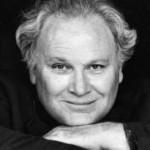 In short, though it took twenty years to get there, the Sixth Doctor has found his redemption. And he's not stopping…
In short, though it took twenty years to get there, the Sixth Doctor has found his redemption. And he's not stopping…
Previous Posts:
INTRODUCTION
THE FIRST DOCTOR YEARS: 1963-1966
THE SECOND DOCTOR YEARS: 1966-1969
THE THIRD DOCTOR YEARS: 1970-1974
THE FOURTH DOCTOR YEARS: 1975-1981
THE FIFTH DOCTOR YEARS (1982-1984)
December 29, 2010
A Modern Woman's Guide to Classic Who: THE FIFTH DOCTOR YEARS (1982-1984)
 Summary: The Fifth Doctor was, as with all recasts of this character, something different! At 29, Peter Davison because the youngest actor ever to take the part, a record only broken recently with the casting of 26 year old Matt Smith. While several previous Doctors had long, established careers behind them, Davison had the distinction of already being a popular heart-throb, thanks to his role as Tristan in the TV series All Creatures Great and Small. Rather oddly, the show itself went out of its way to make Davison's Doctor appear as sexless as possible, to the point of not even wanting the character to touch any of his companions, for fear there might be some (gasp) spark of chemistry between them. The new producer, John Nathan Turner (JNT) who had started with Tom Baker's final season, began to put his own stamp on the long-running show. In particular, he had a knack for handling the media and making a splash in the newspapers. The companions all appeared in glam poses and sexy pouts… everywhere except the show itself, where for several years they were covered firmly from neck to ankle, and madly avoided eye contact with each other.
Summary: The Fifth Doctor was, as with all recasts of this character, something different! At 29, Peter Davison because the youngest actor ever to take the part, a record only broken recently with the casting of 26 year old Matt Smith. While several previous Doctors had long, established careers behind them, Davison had the distinction of already being a popular heart-throb, thanks to his role as Tristan in the TV series All Creatures Great and Small. Rather oddly, the show itself went out of its way to make Davison's Doctor appear as sexless as possible, to the point of not even wanting the character to touch any of his companions, for fear there might be some (gasp) spark of chemistry between them. The new producer, John Nathan Turner (JNT) who had started with Tom Baker's final season, began to put his own stamp on the long-running show. In particular, he had a knack for handling the media and making a splash in the newspapers. The companions all appeared in glam poses and sexy pouts… everywhere except the show itself, where for several years they were covered firmly from neck to ankle, and madly avoided eye contact with each other.
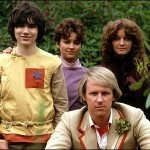 The first season and a half of Davison's run is generally regarded by fans as the "crowded TARDIS" phase – with three companions, many script writers apparently found it hard to give everyone something to do, to the point that many stories found an excuse to write out one or two of the three, due to excessive napping or being stuck in an air vent for several episodes. The first season is also notable for the companions wearing the same costumes with little respite: the joke being that the costume department got so exhausted with coming up with something beautiful and creative for Romana each week that they rebelled when it came to the next generation of companions.
The first season and a half of Davison's run is generally regarded by fans as the "crowded TARDIS" phase – with three companions, many script writers apparently found it hard to give everyone something to do, to the point that many stories found an excuse to write out one or two of the three, due to excessive napping or being stuck in an air vent for several episodes. The first season is also notable for the companions wearing the same costumes with little respite: the joke being that the costume department got so exhausted with coming up with something beautiful and creative for Romana each week that they rebelled when it came to the next generation of companions.
For the first time, Doctor Who moved from its traditional Saturday teatime slot to weekday evenings, and towards the end of the Davison run, began to incorporate more adult content, particularly violence in some stories. This was to continue beyond the Fifth Doctor Years into the Sixth and ultimately would be one of the sticks wielded against the show (though complaints about violence dated back at least as far as the early Fourth Doctor Years).
The format remained the same despite the time change – stories made up of half hour episodes, apart from the Five Doctors special which aired as a single movie-length story.
Things You Need To Know: after a post-randomiser spell of being rather good in the steering department, the TARDIS became erratic again, with a particular blind spot when it came to getting Tegan to Heathrow airport. For the most part, however, the TARDIS was reliable/unreliable when convenient to the plot, with little logic. The sonic screwdriver was destroyed rather comprehensively in Davison's first season, because it was felt that it made life too easy for the Doctor. (the same argument had been made about K9 – funny how writers always find SOMETHING to make their writing lazy…)
It's generally believed that the death of the sonic screwdriver was more upsetting to fans than the death of Adric a few stories later… and there is an urban myth that they received more letters of complaint about the former than the latter. Unless I just made that up. Did I just make that up?
The Companions:
 Adric (Matthew Waterhouse) – as I said in the Fourth Doctor Years, Adric has been loathed by large swathes of fandom for decades. He is pretty irritating. More importantly, he just didn't work that well with Davison's Doctor – as a chatty urchin, Adric made a good contrast to Doom n Gloom Tom, but there's little positive chemistry between him and the Fifth Doctor, and any scene which contains both Adric and Tegan is generally pretty awful because they grate terribly against each other. He is at his most likeable in Black Orchid, mostly because he acts more like a big kid than like someone trying to impress everyone else. His swansong, Earthshock, is a pleasingly excellent episode, even if Adric himself is irritating and WRONG right up to his dramatic death scene. Yes, I know that's a spoiler, it was 1982! Knowing what happens in certain stories is part of the Classic Who experience…
Adric (Matthew Waterhouse) – as I said in the Fourth Doctor Years, Adric has been loathed by large swathes of fandom for decades. He is pretty irritating. More importantly, he just didn't work that well with Davison's Doctor – as a chatty urchin, Adric made a good contrast to Doom n Gloom Tom, but there's little positive chemistry between him and the Fifth Doctor, and any scene which contains both Adric and Tegan is generally pretty awful because they grate terribly against each other. He is at his most likeable in Black Orchid, mostly because he acts more like a big kid than like someone trying to impress everyone else. His swansong, Earthshock, is a pleasingly excellent episode, even if Adric himself is irritating and WRONG right up to his dramatic death scene. Yes, I know that's a spoiler, it was 1982! Knowing what happens in certain stories is part of the Classic Who experience…
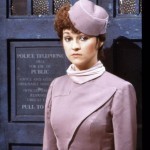 Tegan (Janet Fielding) is a tricky one for me. I mostly disliked her when watching the show as a child, and am starting now to reconcile to her as a character – even to appreciate her. But sometimes I still have to work at it. My main complaint was one shared with many others: the constant bitching and moaning about getting home. I think children in particular are entirely lacking in sympathy to people who get keys to the magical kingdom and spend all their time worrying about getting back to sepia Kansas. Looking at it now, I kind of want her to get back to her job and her safe life! I don't blame her for being suspicious at how the Doctor mysteriously forgets how to fly the TARDIS whenever its her turn to pick the destination. She has totally been abducted.
Tegan (Janet Fielding) is a tricky one for me. I mostly disliked her when watching the show as a child, and am starting now to reconcile to her as a character – even to appreciate her. But sometimes I still have to work at it. My main complaint was one shared with many others: the constant bitching and moaning about getting home. I think children in particular are entirely lacking in sympathy to people who get keys to the magical kingdom and spend all their time worrying about getting back to sepia Kansas. Looking at it now, I kind of want her to get back to her job and her safe life! I don't blame her for being suspicious at how the Doctor mysteriously forgets how to fly the TARDIS whenever its her turn to pick the destination. She has totally been abducted.
Tegan gets more character background than any previous companion: we meet several members of her family (and not all of them end up dead!). She also has the rather interesting transition of going home at the end of one season, and choosing to return at the beginning of the next, without the same baggage as before. (I lost my job, hooray!) Her friendship with Nyssa is one of the joys of her character (there haven't been two women in the TARDIS since the Hartnell years) and their scenes together are very enjoyable.
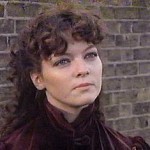 As an adult, I look at Nyssa (Sarah Sutton) and wonder why I used to like her so much when I was younger. She was pretty and nice, which probably did it. There was so much potential in Nyssa – her interest in science and her tinkering skills are fabulous, but we rarely see them in action. She also had a hugely tragic backstory, which was used to great effect in Logopolis and then largely forgotten about. I do love scenes with Tegan and Nyssa working together, as they did in Castrovalva, and having fun together, as in Black Orchid. We actually get to see other rooms in the TARDIS during this era, including bedrooms of the companions! Sadly they don't hang around and chat in them nearly enough, but there is a bit of it. I like the development that Nyssa got in the second Fifth Doctor season, and particularly her kick-arseness in Arc of Infinity, running around on Gallifrey threatening people with weapons because her Doctor is in danger. While I love the Nyssa-Tegan friendship, I do think it's a shame Nyssa was mostly there as part of a crowd, because she makes a very good solo companion. At least when she was written out it was in the name of SCIENCE and not some soppy fake love story. Not that I mind love stories but let's face it, at this point there had only been 2-3 decent ones in twenty years, the odds weren't good for her.
As an adult, I look at Nyssa (Sarah Sutton) and wonder why I used to like her so much when I was younger. She was pretty and nice, which probably did it. There was so much potential in Nyssa – her interest in science and her tinkering skills are fabulous, but we rarely see them in action. She also had a hugely tragic backstory, which was used to great effect in Logopolis and then largely forgotten about. I do love scenes with Tegan and Nyssa working together, as they did in Castrovalva, and having fun together, as in Black Orchid. We actually get to see other rooms in the TARDIS during this era, including bedrooms of the companions! Sadly they don't hang around and chat in them nearly enough, but there is a bit of it. I like the development that Nyssa got in the second Fifth Doctor season, and particularly her kick-arseness in Arc of Infinity, running around on Gallifrey threatening people with weapons because her Doctor is in danger. While I love the Nyssa-Tegan friendship, I do think it's a shame Nyssa was mostly there as part of a crowd, because she makes a very good solo companion. At least when she was written out it was in the name of SCIENCE and not some soppy fake love story. Not that I mind love stories but let's face it, at this point there had only been 2-3 decent ones in twenty years, the odds weren't good for her.
I wonder how the New Who writers and TV style of today would have handled these characters – I like to think that they learned from the mistakes of 80′s Classic Who.
 Turlough (Mark Strickson) was one of my favourite companions, not because he was more likeable than Adric or Tegan, but precisely because he was supposed to be unlikeable. He is brought into the TARDIS crew as the Doctor's would-be assassin, and after the arc in which he decided not, after all to kill the Doctor, he was allowed to remain. His more prickly, wary character was a nice contrast to the Fifth Doctor's open friendliness – I adore that the Doctor's way of dealing with Turlough's traitorousness was basically to be lovely to him until he gave in and agreed to be friends forever. And I wonder why it is that I enjoyed Turlough's crankiness and sarcasm while being annoyed by it in Tegan…
Turlough (Mark Strickson) was one of my favourite companions, not because he was more likeable than Adric or Tegan, but precisely because he was supposed to be unlikeable. He is brought into the TARDIS crew as the Doctor's would-be assassin, and after the arc in which he decided not, after all to kill the Doctor, he was allowed to remain. His more prickly, wary character was a nice contrast to the Fifth Doctor's open friendliness – I adore that the Doctor's way of dealing with Turlough's traitorousness was basically to be lovely to him until he gave in and agreed to be friends forever. And I wonder why it is that I enjoyed Turlough's crankiness and sarcasm while being annoyed by it in Tegan…
 Tegan and Turlough were paired as the Fifth Doctor's companions for the second half of his run, and while my memory is that they sniped at each other all the time, I'm not so sure that's true. Part of the trouble with watching Classic Who in every which order, as I and most fans have done over the years, is that you often miss out on what little character development we are offered, because of watching stories out of order. The Tegan and Turlough stories I have watched as an adult are a lot more appealing to me when I was younger, and I find myself sympathising a lot more with Tegan's bolshy attitude and her willingness to bitch at the Doctor when he screws up. Which probably means I have to check all my preconceptions about Classic Who, right? I do enjoy Tegan-and-Turlough in Frontios, and I also rather like the opening scene of the Five Doctors, which shows them all at peace instead of bickering. The absolute best story featuring them both is Enlightenment, though they rarely appear in scenes together.
Tegan and Turlough were paired as the Fifth Doctor's companions for the second half of his run, and while my memory is that they sniped at each other all the time, I'm not so sure that's true. Part of the trouble with watching Classic Who in every which order, as I and most fans have done over the years, is that you often miss out on what little character development we are offered, because of watching stories out of order. The Tegan and Turlough stories I have watched as an adult are a lot more appealing to me when I was younger, and I find myself sympathising a lot more with Tegan's bolshy attitude and her willingness to bitch at the Doctor when he screws up. Which probably means I have to check all my preconceptions about Classic Who, right? I do enjoy Tegan-and-Turlough in Frontios, and I also rather like the opening scene of the Five Doctors, which shows them all at peace instead of bickering. The absolute best story featuring them both is Enlightenment, though they rarely appear in scenes together.
(as a side note – fans roll their eyes about how much Janet Fielding goes on about her hair and costumes in the DVD commentaries but OMG HAVE YOU SEEN HER HAIR AND COSTUMES? That poor woman. No wonder Tegan was cranky all the time)
 Peri Brown (Nicola Bryant) is largely known as a Sixth Doctor companion – though like Tegan and Nyssa last time around, she was brought in two stories before the end of the Fifth Doctor's run. I wonder why they did it that way – transitioning characters really only work with great effect when those characters have known the Doctor for a while. They might have done better in both instances to do a Pertwee/Eccleston/Smith – relaunch the series by introducing a new companion and Doctor in the opening story.
Peri Brown (Nicola Bryant) is largely known as a Sixth Doctor companion – though like Tegan and Nyssa last time around, she was brought in two stories before the end of the Fifth Doctor's run. I wonder why they did it that way – transitioning characters really only work with great effect when those characters have known the Doctor for a while. They might have done better in both instances to do a Pertwee/Eccleston/Smith – relaunch the series by introducing a new companion and Doctor in the opening story.
The 'hands off' policy had ebbed by this point, with the female companions dressed more sexily in the latter seasons of the Fifth Doctor – Nyssa famously dropped her skirt for no apparent reason in her final story, and once Tegan got out of her ugly uniform she was squeezed into tinier and tinier outfits: all boob tube and mini-skirt. It's pretty clear that the character of Peri was being presented very cynically as a sex symbol – in her first few episodes she spends most of her time in a bikini, and Nicola Bryant herself tells the story about how she was asked to wear something tight to the audition, and lacking a skimpy outfit herself, turned up in a leotard and shorts, which ended up being used as Peri's signature outfit…
Having said all that, Peri's introduction in Planet of Fire is excellent from a plotty point of view, and really made me like her relationship with the Fifth Doctor. I was sad that this was also the story in which Turlough was written out, because the combination of these three characters was fresh and appealing, and I would have happily watched far more of them. We see a very relaxed relationship between Turlough and the Doctor in this story – they get to be friends rather than, as usually happened in this era, the companions sitting at the kiddie table together while the Doctor goes off and does Important Things. Yes, another season of Fifth Doctor, Turlough and Peri, or just Fifth Doctor and Turlough OR Peri would have been rather fine. But instead… sigh.
More on that later.
 Not quite a companion (no matter what the programme guide says!) we have shapechanging robot Kamelion, a tool of the Master, who appears rather gorgeously in the medieval two parter The King's Demons, is invited to join the TARDIS crew as a companion, and then is not mentioned again until Planet of Fire, in which Kamelion is written out. The official story there is that the robot (yes they had an actual animatronic robot) was almost impossible to use, and that the original operator died, leaving them with an expensive, useless prop on their hands. Kamelion did benefit from one of the best leaving stories in Planet of Fire, where his shapechanging abilities are used to great effect.
Not quite a companion (no matter what the programme guide says!) we have shapechanging robot Kamelion, a tool of the Master, who appears rather gorgeously in the medieval two parter The King's Demons, is invited to join the TARDIS crew as a companion, and then is not mentioned again until Planet of Fire, in which Kamelion is written out. The official story there is that the robot (yes they had an actual animatronic robot) was almost impossible to use, and that the original operator died, leaving them with an expensive, useless prop on their hands. Kamelion did benefit from one of the best leaving stories in Planet of Fire, where his shapechanging abilities are used to great effect.
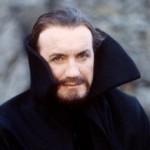 That brings me to the Master, who becomes a running/recurring character here for the first time since the Third Doctor years. He turned up a handful of times during the Fourth, mostly as a wobbly half-dead bubble-wrapped thing, though he recovered a dapper existence towards the end of the Fourth Doctor's era (cough, actually bringing about the end of said era). Anthony Ainley was MY Master – I only discovered Delgado retroactively – and however hammy he is in some stories, I will always adore him. There's an argument that he was used too much in this era, especially with all the constantly turning up in disguise as someone else whose name is an amusing anagram, but that's AUTHENTIC, that's just how the Master is, and I'm pretty sure you can never have too much of him. Just look at that beard.
That brings me to the Master, who becomes a running/recurring character here for the first time since the Third Doctor years. He turned up a handful of times during the Fourth, mostly as a wobbly half-dead bubble-wrapped thing, though he recovered a dapper existence towards the end of the Fourth Doctor's era (cough, actually bringing about the end of said era). Anthony Ainley was MY Master – I only discovered Delgado retroactively – and however hammy he is in some stories, I will always adore him. There's an argument that he was used too much in this era, especially with all the constantly turning up in disguise as someone else whose name is an amusing anagram, but that's AUTHENTIC, that's just how the Master is, and I'm pretty sure you can never have too much of him. Just look at that beard.
Feminist Heroes: Tegan and Nyssa (if you squint sideways at them)
Best Stories To Watch:
 Title: Castrovalva (1982)
Title: Castrovalva (1982)
Featuring: the Fifth Doctor, Tegan, Nyssa, Adric, the Master
Why Watch: This overly clever adventure shows off Peter Davison to great effect, even if the Doctor he was to become only really turns up at the end. He plays up the idea of a failing regeneration, and (this is something I realised only recently) actually impersonates several of his former selves as part of what appears to be a total mental breakdown. We spend a lot of time in the various rooms and corridors of the TARDIS, which I always enjoy, and when we emerge it is into a landscape based on classic Escher artwork, including a recursive city on a clifftop. Adric is kidnapped by the Master and spends most of the episode out of everyone's way, while Tegan and Nyssa roll their socks up and get on with saving the day. At the end, there's celery. What's not to love?
Category: Just Plain Batty
If You Like This You May Like: Kinda, Black Orchid, Earthshock
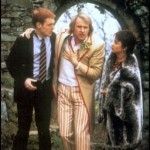 Title: The Five Doctors (1983)
Title: The Five Doctors (1983)
Featuring: the Doctor, Tegan, Turlough, Romana II, Sarah Jane Smith, the Brigadier, Susan, etc.
Why Watch: Okay, I swore I wasn't going to recommend this, because it's totally NOT the one to watch if you've never watched any other Classic Who, or even if you haven't watched any for some time. The story makes NO SENSE if you pay attention, and every single character is given embarrassingly short shrift. But… It's a classic, and if you have fond memories of any of the characters or old Doctors, you will probably enjoy it.
Or Not: it's really not very good! All ambition and little substance. But if you have the newest edition, do try to find the David Tennant easter egg commentary.
Category: Event!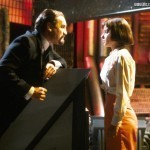 Title: Planet of Fire (1984)
Title: Planet of Fire (1984)
Featuring: the Fifth Doctor, Turlough, Peri, Kamelion, the Master
Why Watch: I know, I know. This is where I'm supposed to recommend The Caves of Androzani, which as we all know is the BEST DOCTOR WHO OF ALL TIME. Sorry and all that, but I don't like it all that much. I also don't think it's one that has aged particularly well, given its focus on action. Meanwhile, Planet of Fire has gorgeous visuals from sunny Lanzarote, it features some mad cultists which is always nice, there's the Master and a chilling use of the new companion's family… there's a doomed robot, and did I mention the Master? and, well, both the Doctor's companions get wet in swimsuits, so there really is something for everyone.
Category: Lost Civilisations with Aliens
If You Like This You May Like: Frontios and yes, all right, Caves of Androzani IF YOU MUST.
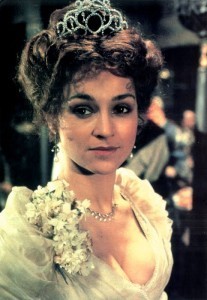 Marathon: The Black Guardian Trilogy (1983) is definitely a good investment if you want to get to grips with the Davison era. It features key transition episodes Mawdryn Undead and Terminus (Turlough's first and Nyssa's last stories respectively) and not only brings the Brigadier back for a strong (if slightly inane) reunion with the Doctor but follows Turlough on his dark journey in service to the Black Guardian. Also it culminates with Enlightenment, one of the most lavish dark fairy tales ever told in Doctor Who: the story of Eternals sailing through space, colliding with Turlough's final decision. Tegan gets a pretty frock, and a creepy godlike being falls in love with her. If City of Death is the closest that Classic Who can get to an RTD story, then Enlightenment is the closest we get to a Moffat.
Marathon: The Black Guardian Trilogy (1983) is definitely a good investment if you want to get to grips with the Davison era. It features key transition episodes Mawdryn Undead and Terminus (Turlough's first and Nyssa's last stories respectively) and not only brings the Brigadier back for a strong (if slightly inane) reunion with the Doctor but follows Turlough on his dark journey in service to the Black Guardian. Also it culminates with Enlightenment, one of the most lavish dark fairy tales ever told in Doctor Who: the story of Eternals sailing through space, colliding with Turlough's final decision. Tegan gets a pretty frock, and a creepy godlike being falls in love with her. If City of Death is the closest that Classic Who can get to an RTD story, then Enlightenment is the closest we get to a Moffat.
Or Not: Terminus is really, really bad. No one would blame you if you skipped it.
Extra, extra: Thanks to Big Finish, we have some fantastic audio plays which have gone a long way to picking up some of the lost opportunities of the Fifth Doctor era, featuring the original actors but with scripts and stories far more in tune with the modern Who audience.
Big Finish offers many stories which make the most of Nyssa, Turlough and Peri as solo companions. Nyssa in particular makes an excellent companion with just the Doctor! I enjoyed her in Creatures in Beauty, and Turlough in Phantasmagoria among others. Peri has been joined by Erimem, a winsome former Egyptian Pharoah, in several adventures beginning with Eye of the Scorpion. More recently, Janet Fielding relented and joined the group of former Doctor Who performers at Big Finish, which allowed them to do a trilogy of stories (Cobwebs, The Whispering Forest, Cradle of the Snake) featuring Tegan, Nyssa and Turlough. The conceit of these stories is that the Doctor, Tegan and Turlough meet Nyssa again, fifty years after she left them in her time, though only a short time to them. All three plays are excellent, and I particularly liked how age and confidence has developed Nyssa into something closer to the Doctor's equal, and how uncertain Tegan is at the robustness of their friendship now that so much time has passed for her friend. It's also nice to see Nyssa and Turlough getting to perform together, when they had little opportunity in the original show.
Previous Posts:
INTRODUCTION
THE FIRST DOCTOR YEARS: 1963-1966
THE SECOND DOCTOR YEARS: 1966-1969
THE THIRD DOCTOR YEARS: 1970-1974
THE FOURTH DOCTOR YEARS: 1975-1981
Looking to 2011
If you're a regular listener to Galactic Suburbia, don't forget to check out the Boxing Day Super Mega Podcast over at Notes from Coode Street – Alisa, Alex and I joined Jonathan and Gary, along with Mondy from The Writer and the Critic and Grant from Bad Film Diaries. It was great fun to record, and I think we did a great job at summing up the last year and looking forward to the next one. I think we're going to try to do it every year!
Marianne de Pierres has called on her writerly friends to blog about their writing plans for 2011. Margo has shared her plans here.
So here are mine:
Shattered City [Creature Court Book Two] will be out in April, and Reign of Beasts [Creature Court Book Three] in October. Those dates are pretty firm, as far as I know.
There's also a short story quartet with Twelfth Planet Press, which is Not Announced yet, but which we accidentally discussed on Galactic Suburbia, so it's silly to pretend it doesn't exist. I'm really proud of these stories!
My writing plans for 2011 are quite single-minded: I have Fury, the first Nancy Napoleon novel, to write. It's rather lovely, I've been turning it over in my head for a while now and am looking forward to March when I can tear into it. We're planning on a ROR for September, so I'm planning to have Fury drafted and done by August.
I should have time to get started on something else towards the end of the year, especially if I do the Nano dance, but I'm leaving my plans open in that regard. If I've presold Fury by then, it might be sensible to get started on the next in that series, though I'd prefer to do something else in between. I have another dark fantasy series ticking away in the back of my head, plus several YA projects fighting for my attention.
Still, for the first half of the year at least, it's all Nancy Nancy Nancy… and thanks to that delicious Australia Council grant, I have TWO full days of baby daycare to help me along the way.
A Modern Woman's Guide to Classic Who: THE FOURTH DOCTOR YEARS: 1975-1981
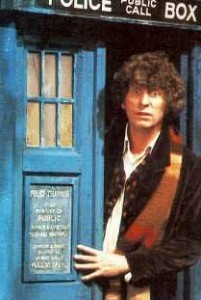 Summary: It's the Fourth Doctor with his hat and scarf and big toothy grin that most often represents Classic Who in people's minds – even those who have never watched the show. Tom Baker, barely even a working actor when he got the part, was 40 when he got the role, making him the youngest ever man to play the Doctor. He quickly made the part his own – like Jon Pertwee, he was equally at home with comedy and drama, and frequently used his voice to convey just how much doom everyone was in.
Summary: It's the Fourth Doctor with his hat and scarf and big toothy grin that most often represents Classic Who in people's minds – even those who have never watched the show. Tom Baker, barely even a working actor when he got the part, was 40 when he got the role, making him the youngest ever man to play the Doctor. He quickly made the part his own – like Jon Pertwee, he was equally at home with comedy and drama, and frequently used his voice to convey just how much doom everyone was in.
Not since Dalekmania in the early sixties had Doctor Who been such a successful show – it enjoyed a level of mainstream popularity at this time that would not be eclipsed until David Tennant won the hearts of the British public. Rather famously, Baker played the Doctor pretty close to method, embracing his position as a role model to children, and even now when he speaks of the role you can see that the "I" that is Baker and the "I" that is the Doctor get deeply tangled together – unless that's all part of a colossal joke he is still playing on his audience.
Baker played the part for seven years, still the longest any Doctor has ever kept the role. His era can be divided into three rough periods based on their producers: the Hinchcliffe era (1975-7) which combined hard-ish SF before developing a dark, gothic horror sensibility; the brighter and shinier spaceships-and-funny-hats Graham Williams era (1977-80), and the entropy-and-dark-Tom, John Nathan Turner (JNT) season at the very end. While the latter half of Tom Baker's run had some real gems, especially with legendary comedy writer Douglas Adams script editing and even writing some episodes, it's the Hinchcliffe era that is most critically acclaimed and romanticised by fans for its high quality of scripts, performances and atmosphere.
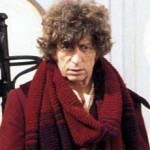 I've heard many fans complain about the darker, more morose version of the Fourth Doctor played by Baker in his last year or two – when the actor himself was tiring of the part. In truth, though, the Fourth Doctor was quite dark and unpredictable from early on, often snapping at his companions or working to convince the audience that this time, he might actually be seduced over to the dark side. Several stories like The Deadly Assassin and The Invasion of Time are based on this premise, and as early as Robot, the Doctor was marching to his own tune, regardless of the finer feelings of others. Baker himself, however he embraced his role as a childhood hero, far preferred the darker and more adult side of the Doctor, and many of his suggestions and preferences crept into the show here and there over the years. The high comedy and charm of this Doctor is what most people remember, as with David Tennant, though a closer examination of the stories reveals far more complex layers.
I've heard many fans complain about the darker, more morose version of the Fourth Doctor played by Baker in his last year or two – when the actor himself was tiring of the part. In truth, though, the Fourth Doctor was quite dark and unpredictable from early on, often snapping at his companions or working to convince the audience that this time, he might actually be seduced over to the dark side. Several stories like The Deadly Assassin and The Invasion of Time are based on this premise, and as early as Robot, the Doctor was marching to his own tune, regardless of the finer feelings of others. Baker himself, however he embraced his role as a childhood hero, far preferred the darker and more adult side of the Doctor, and many of his suggestions and preferences crept into the show here and there over the years. The high comedy and charm of this Doctor is what most people remember, as with David Tennant, though a closer examination of the stories reveals far more complex layers.
Things You Need To Know: The super-long scarf which is an icon of this Doctor supposedly happened because the little old lady they gave the yarn to didn't know when to stop, and just kept going until she ran out of yarn. This run is responsible for several important 'firsts' in the Doctor Who universe, including the first time we visit Gallifrey, the Doctor's home planet, the first time the Doctor has a whole story without a companion (both in The Deadly Assassin) and the first time the Doctor is accompanied by alien companions instead of (and as well as) human. The TARDIS remained erratic but was mostly steerable, until a point when the Doctor deliberately fitted a "randomiser" to make it harder for them to be followed by certain nefarious forces.
The Companions:
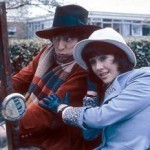 Sarah Jane Smith (Elisabeth Sladen) continued for several years with this new incarnation of the Doctor – his first story, Robot, is a great story for her, as we largely see the difficult transition though her eyes, and we also see her getting on with her life and career during the Doctor's post-regeneration problems. This new Doctor is a chaotic force, and it takes Sarah a while to come to terms with who he is now. When she chooses to travel with him at the end of Robot, she is accepting her companion role all over again, and instead of the part time adventuring she indulged in during the Pertwee years, this is her leaving everything behind.
Sarah Jane Smith (Elisabeth Sladen) continued for several years with this new incarnation of the Doctor – his first story, Robot, is a great story for her, as we largely see the difficult transition though her eyes, and we also see her getting on with her life and career during the Doctor's post-regeneration problems. This new Doctor is a chaotic force, and it takes Sarah a while to come to terms with who he is now. When she chooses to travel with him at the end of Robot, she is accepting her companion role all over again, and instead of the part time adventuring she indulged in during the Pertwee years, this is her leaving everything behind.
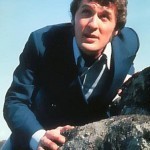 Harry Sullivan (Ian Marter), the UNIT doctor put in charge of the Doctor's health after his regeneration, is dragged along for the ride for a season and a bit. Harry, the sort of old-fashioned, bluff British chap who calls girls "old thing" (Sarah does not take well to that!) is very much in the mould of the Heroic Blokes of the First Doctor Years – he is Ian Chesterton to the life – and was originally cast because they intended to cast the Doctor as an older, less active character than Pertwee. In fact, he and Sarah made a splendid trio with the Fourth Doctor, forming an adventurous, banterific team with some truly classic SF stories such as Ark in Space and Genesis of the Daleks.
Harry Sullivan (Ian Marter), the UNIT doctor put in charge of the Doctor's health after his regeneration, is dragged along for the ride for a season and a bit. Harry, the sort of old-fashioned, bluff British chap who calls girls "old thing" (Sarah does not take well to that!) is very much in the mould of the Heroic Blokes of the First Doctor Years – he is Ian Chesterton to the life – and was originally cast because they intended to cast the Doctor as an older, less active character than Pertwee. In fact, he and Sarah made a splendid trio with the Fourth Doctor, forming an adventurous, banterific team with some truly classic SF stories such as Ark in Space and Genesis of the Daleks.
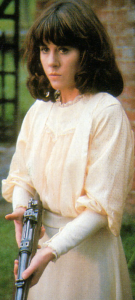 Harry left after a little over a year, and Sarah continued as a solo companion for the Fourth Doctor for about a season and a half. This era had some of the best scripted and most beloved "gothic" stories, as script-edited by Robert Holmes, one of the most celebrated Doctor Who writers of all times. The Doctor and Sarah battled alien Egyptian gods in Pyramids of Mars, alien living plants in Seeds of Doom, and a renegade Time Lord in Brain of Morbius. Her swansong, The Hand of Fear, was a fairly average story (though as with all stories of this era, "fairly average" is still pretty damned good) that had Sarah buried in a quarry explosion, hypnotised and cloned by an alien, and then finally come face to face with the destroyed remains of a future Earth… and led to one of the most powerful, funny and heartbreaking scene finales of all time:
Harry left after a little over a year, and Sarah continued as a solo companion for the Fourth Doctor for about a season and a half. This era had some of the best scripted and most beloved "gothic" stories, as script-edited by Robert Holmes, one of the most celebrated Doctor Who writers of all times. The Doctor and Sarah battled alien Egyptian gods in Pyramids of Mars, alien living plants in Seeds of Doom, and a renegade Time Lord in Brain of Morbius. Her swansong, The Hand of Fear, was a fairly average story (though as with all stories of this era, "fairly average" is still pretty damned good) that had Sarah buried in a quarry explosion, hypnotised and cloned by an alien, and then finally come face to face with the destroyed remains of a future Earth… and led to one of the most powerful, funny and heartbreaking scene finales of all time:
While I adore School Reunion of the new season, and love that Sarah was brought back, I did have a big problem with the idea that she was utterly devastated by the Doctor leaving her, that she had no closure, and that (bleh) no man could live up to him. This scene shows that Sarah, always one of the most independent companions, was going to be just fine – and her later returns in K9 & Company and The Five Doctors showed likewise that she basically got on with her life with little but the occasional nostalgic sigh about her time with the Doctor.
 After one rather good but male-centric story, The Deadly Assassin, which had the Doctor visit his home planet of Gallifrey without a companion, he was teamed up with "noble savage" Leela (Louise Jameson), whose sexy costume makes her probably the most remembered-by-people-who-never-watched-the-show companion. Leela has a powerful introduction in The Face of Evil, as a huntress from a primitive society. Like Jamie before her, she calmly accepts of science fictional concepts as "magic" and serves the Doctor as a very effective companion, willing to perform violence when he is not. Yes, that's right, Leela is closer to a Heroic Bloke companion than a Screamer or a Feminist Hero! Her costume was famously chosen "for the dads", but there was a lot more to Leela than a skimpy leather dress. More than any companions since Ian and Barbara, Leela had a steep learning curve to travel on with the Doctor: he takes on the role of teacher, Henry Higgins to her Eliza Doolittle, and works hard not only to teach her to function in a civilised society, but also to restrain her more violent instincts, at least when it came to killing people. This could be awful, but Leela refuses to be patronised by him, and her intelligence always shows through.
After one rather good but male-centric story, The Deadly Assassin, which had the Doctor visit his home planet of Gallifrey without a companion, he was teamed up with "noble savage" Leela (Louise Jameson), whose sexy costume makes her probably the most remembered-by-people-who-never-watched-the-show companion. Leela has a powerful introduction in The Face of Evil, as a huntress from a primitive society. Like Jamie before her, she calmly accepts of science fictional concepts as "magic" and serves the Doctor as a very effective companion, willing to perform violence when he is not. Yes, that's right, Leela is closer to a Heroic Bloke companion than a Screamer or a Feminist Hero! Her costume was famously chosen "for the dads", but there was a lot more to Leela than a skimpy leather dress. More than any companions since Ian and Barbara, Leela had a steep learning curve to travel on with the Doctor: he takes on the role of teacher, Henry Higgins to her Eliza Doolittle, and works hard not only to teach her to function in a civilised society, but also to restrain her more violent instincts, at least when it came to killing people. This could be awful, but Leela refuses to be patronised by him, and her intelligence always shows through.
In one of the most poorly thought out companion departures in the history of the show, Leela leaves the Doctor by reaching blindly out behind her and taking the hand of the nearest Gallifreyan guard, with whom she has hardly shared any scenes and certainly no chemistry for the preceding story. It's a shame, because if written well, her fate to end up living on the Doctor's home planet would have been a fine ending to her story, but she was badly let down by everyone involved in the production.
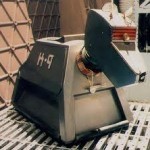 K-9 the robot dog also became an iconic character of the Fourth Doctor Years. First introduced in The Invisible Enemy, the Doctor was supposed to return him to his rightful owner and creator, but somehow "forgot." Yep, he stole him. I love K9, as voiced mostly by John Leeson. Considering the primitive robotic technology they had to work with in the 70's, he comes across remarkably well as a character in his own right. The Doctor handed over the first incarnation of K9 to Leela, only to build himself a new one.
K-9 the robot dog also became an iconic character of the Fourth Doctor Years. First introduced in The Invisible Enemy, the Doctor was supposed to return him to his rightful owner and creator, but somehow "forgot." Yep, he stole him. I love K9, as voiced mostly by John Leeson. Considering the primitive robotic technology they had to work with in the 70's, he comes across remarkably well as a character in his own right. The Doctor handed over the first incarnation of K9 to Leela, only to build himself a new one.
 Romana I (Mary Tamm) was a very different companion, introduced in The Ribos Operation, first of the Key to Time season – which is one of only two entire seasons of Classic Who released as a box set. Romana was given to a reluctant Doctor by the Time Lords, as an assistant to help him on a quest to collect the pieces of the Key to Time. Like Liz, Romana is a companion who is allowed to be almost equal to the Doctor's intelligence. As a Time Lady, one of his own people, she has the same (in many cases superior) knowledge about the great mysteries of time travel, science and the universe, though his life experience is in turn superior. They constantly work to one-up each other, and have a great chemistry. I'm a big fan of this first Romana for her elegance, sharp wit and intelligence, not to mention her stunning wardrobe, which on at least one occasion becomes relevant to the plot.
Romana I (Mary Tamm) was a very different companion, introduced in The Ribos Operation, first of the Key to Time season – which is one of only two entire seasons of Classic Who released as a box set. Romana was given to a reluctant Doctor by the Time Lords, as an assistant to help him on a quest to collect the pieces of the Key to Time. Like Liz, Romana is a companion who is allowed to be almost equal to the Doctor's intelligence. As a Time Lady, one of his own people, she has the same (in many cases superior) knowledge about the great mysteries of time travel, science and the universe, though his life experience is in turn superior. They constantly work to one-up each other, and have a great chemistry. I'm a big fan of this first Romana for her elegance, sharp wit and intelligence, not to mention her stunning wardrobe, which on at least one occasion becomes relevant to the plot.
 Romana regenerated after a year, to be played now by Lalla Ward, whose version of the character was much more light-hearted and flirtatious. While Romana II isn't anywhere close to being one of my favourite Fourth Doctor companions (there are so many great ones!), she certainly feels to be the best matched to that Doctor: like Sarah, she runs loyally along behind him rather than challenging him as Leela and Romana I were wont to do, and when they are given good banter, it's a pleasure to watch these two bat it back and forth. In her last few stories, as the Doctor becomes a darker and more menacing figure, we also see Romana return to her elegant, haughty ways, particularly in her interactions with Adric. When she leaves, it is as a graceful saviour to people in need, rather than the mischevious scamp of a Time Lady who flitted around the streets of Paris in City of Death.
Romana regenerated after a year, to be played now by Lalla Ward, whose version of the character was much more light-hearted and flirtatious. While Romana II isn't anywhere close to being one of my favourite Fourth Doctor companions (there are so many great ones!), she certainly feels to be the best matched to that Doctor: like Sarah, she runs loyally along behind him rather than challenging him as Leela and Romana I were wont to do, and when they are given good banter, it's a pleasure to watch these two bat it back and forth. In her last few stories, as the Doctor becomes a darker and more menacing figure, we also see Romana return to her elegant, haughty ways, particularly in her interactions with Adric. When she leaves, it is as a graceful saviour to people in need, rather than the mischevious scamp of a Time Lady who flitted around the streets of Paris in City of Death.
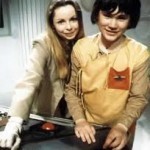 Ah, Adric. One of the most loathed companions of Doctor Who history. He appeared five stories before the end of Tom Baker's final season, which would seem like a decent run for any other companion but coming as it does at the end, feels like a mere footnote. Adric (Matthew Waterhouse), a mouthy teenage maths genius (with apologies to Wil Wheaton, he was totally the Wesley Crusher of his time), actually fits rather well with Tom Baker's Doctor towards the end. I'm not a fan of him in his first few stories, playing gooseberry between the Doctor and Romana, but in Keeper of Traken and Logopolis, there's actually some rather nice boyish banter between the two characters, and Tom Baker seems to thrive on finally getting, after so long, a complete innocent to say "what's happening, Doctor?" and "aren't you clever!". Certainly Adric is more likeable in those two stories than in most of the Peter Davison run…
Ah, Adric. One of the most loathed companions of Doctor Who history. He appeared five stories before the end of Tom Baker's final season, which would seem like a decent run for any other companion but coming as it does at the end, feels like a mere footnote. Adric (Matthew Waterhouse), a mouthy teenage maths genius (with apologies to Wil Wheaton, he was totally the Wesley Crusher of his time), actually fits rather well with Tom Baker's Doctor towards the end. I'm not a fan of him in his first few stories, playing gooseberry between the Doctor and Romana, but in Keeper of Traken and Logopolis, there's actually some rather nice boyish banter between the two characters, and Tom Baker seems to thrive on finally getting, after so long, a complete innocent to say "what's happening, Doctor?" and "aren't you clever!". Certainly Adric is more likeable in those two stories than in most of the Peter Davison run…
Two new female companions are also introduced in those last two stories of the Fourth Doctor Years, preparing for the transition to the Fifth. They feel like they belong to the next era rather than this one, though in fact much of their meatiest material is in these two stories.
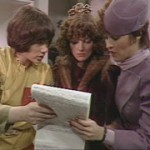 The Keeper of Traken is one of my favourites of all time: a very dark almost-fantasy (all of the stories of this final season supposedly took "entropy" as their theme) about a world with no negative thoughts, invaded by a creature who was all negativity, and used their goodness to fuel his return to life. Nyssa (Sarah Sutton), a princess-type with mad science skills, was a character I loved, and she and Adric work very well together here. In Logopolis, shortly before Nyssa returns to join the TARDIS crew, Tegan (Janet Fielding) makes her appearance as a mouthy Australian air stewardess who accidentally wanders aboard the TARDIS after the disappearance of her aunt, and gets stuck there for the next three years…
The Keeper of Traken is one of my favourites of all time: a very dark almost-fantasy (all of the stories of this final season supposedly took "entropy" as their theme) about a world with no negative thoughts, invaded by a creature who was all negativity, and used their goodness to fuel his return to life. Nyssa (Sarah Sutton), a princess-type with mad science skills, was a character I loved, and she and Adric work very well together here. In Logopolis, shortly before Nyssa returns to join the TARDIS crew, Tegan (Janet Fielding) makes her appearance as a mouthy Australian air stewardess who accidentally wanders aboard the TARDIS after the disappearance of her aunt, and gets stuck there for the next three years…
But more about them later.
Feminist Heroes: Leela (even if she is more of a Heroic Bloke), Romana I
Best Stories To Watch:
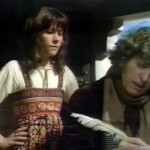 Title: Masque of Mandragora (1976)
Title: Masque of Mandragora (1976)
Featuring: The Fourth Doctor, Sarah Jane Smith
Why Watch: It's a gorgeous Renaissance Italian historical-with-aliens and is an enjoyable showcase for Sarah as a character. It doesn't get as much love as some of the other stories of this era but it's one of my favourites and I think would have quite a bit of appeal to modern fans looking to see what Sarah Jane was like in the old days.
Or Not: there's some cheesy effects and some mad cultists but to be honest if you don't go for either of those things, this is not the show or the era for you.
Category: Historical with Aliens
If You Like This You May Like: Pyramids of Mars, Seeds of Death, Brain of Morbius
 Title: Robots of Death (1977)
Title: Robots of Death (1977)
Featuring: The Fourth Doctor, Leela
Why Watch: this is a clever take on the classic Whodunnit, based on a society of robots, so entrenched in Asimov's Laws of Robotics (or something very like them) that they can't conceive of the idea that robots could possibly do them harm. The script is clever, fast-paced by Classic Who standards, and has (shock!) female characters other than the companion actually doing stuff. The design also works beautifully in this story, which has a lovely aesthetic and some of the most elegant robots we see until the clockwork men in The Girl in the Fireplace.
Category: Space Opera Murder Mystery
If You Like This You May Like: The Face of Evil, The Talons of Weng-Chiang, The Sun Makers.
Or Not: Talons is long held up as one of the best Doctor Who stories of all time, the ultimate example of the Hinchcliffe gothic era. Indeed, it is a great story, featuring some of the best Leela character moments of her whole run, and a haunted music hall plot that is very evocative. Modern viewers might, however, have a bit of a problem with the authentic-for-Victorian-times racism that threads through the whole story, a Huge Enormous Problem with the authentic-for-1977 racism that led to a white actor being cast as a Chinese character, complete with heavy makeup and, um, prosthetic eyelids. He's a great actor and it's a brilliant performance, but… yes. Um. There's also a giant rat puppet which is generally regarded as one of the worst examples of Prop!Fail in the history of the show.
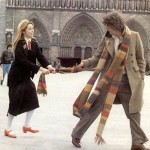 Title: City of Death (1979)
Title: City of Death (1979)
Featuring: The Fourth Doctor, Romana II
Why Watch: Of all the 'best evah' Doctor Who stories recommended most often to New Who fans, this is the one I heartily agree with. It's a classic for many reasons: mostly scripted by Douglas Adams, the banter is second-to-none; the Fourth Doctor and Romana have never been sexier or more charming with each other; the shots of Paris are glorious and bathed in nostalgia; the villain (Julian Glover) is suitably melodramatic; the plot is suitably batshit crazy. It's the happiness of Doctor Who boiled down into one crazy beautiful story, and if I was only going to recommend one story, universally, it would be this one. Oh, and it has a cameo by John Cleese and Eleanor Bron.
Category: Contemporary
If You Like This You May Like: Sadly, there's nothing like it in the rest of Doctor Who history, except perhaps Shada, a story only partly filmed due to strike action.
Marathons: As I've said previously, I'm always shocked when New Who fans set out to watch Classic Who in order – it's a mighty impressive marathon, which I assume would only be undertaken by the most rabid of Classic Who fans rather than those just starting out. Having said that, we're now coming to the point where there are several stories or seasons which do benefit from being watched in order, such as:
Season 12 - Tom Baker's first season, comprising of Robot, Ark in Space, The Sontaran Experiment, Genesis of the Daleks and Revenge of the Cybermen. Sadly not available as a box set.
Key to Time - a linked collection of stories featuring the entirety of Mary Tamm's run as Romana, and an actual narrative from beginning to end (though most of the stories also work as standalones) – The Ribos Operation, The Pirate Planet, The Stones of Blood, The Androids of Tara, The Power of Kroll and The Armageddon Factor. All of these have something going for them, though the pick of the bunch is The Stones of Blood. This lot is actually available as a DVD box set.
Keeper of Traken, Logopolis & Castrovalva – these three stories take us through the development of the new TARDIS crew, the death of the Fourth Doctor and the introduction of the Fifth. They are also available as a box set, entitled New Beginnings, and are worth watching back to back.
I am not going to endorse the E-space trilogy for any but the most ardent Romana II fans because, well, you know. Warrior's Gate.
Extra, extra - we're not exactly hurting for Tom Baker material, but it's worth noting that after a decade or two of ignoring the huge industry of Doctor Who audio plays, Tom Baker has now started doing some. The 'Hornet's Nest' series of plays, also featuring Richard Franklin as an elderly Mike Yates, manage somehow to combine the Hinchcliffe gothic sensibility with the haunted, end-is-in-sight latter years of Baker's run, and make for very enjoyable listening for those who prefer their Doctor to be rather cranky and alienating.
Also if you're a fan of Louise Jamieson's Leela and/or Lalla Ward's Romana, there's an excellent series of audio plays from Big Finish called GALLIFREY which feature Romana as the Lady President, and Leela as her bodyguard. They are made of awesome, and in particular give Leela a much better send off than the original show.
Previous Posts:
INTRODUCTION
THE FIRST DOCTOR YEARS: 1963-1966
THE SECOND DOCTOR YEARS: 1966-1969
THE THIRD DOCTOR YEARS: 1970-1974
December 27, 2010
A Modern Woman's Guide To Classic Who: THE THIRD DOCTOR YEARS (1970-1974)
 Summary: Doctor Who is in COLOUR! Also, there are no more missing stories from now on, despite the BBC's best efforts, though several are only available as black and white prints.
Summary: Doctor Who is in COLOUR! Also, there are no more missing stories from now on, despite the BBC's best efforts, though several are only available as black and white prints.
The Third Doctor's era is in many ways more comparable to other 70's adventure shows like The New Avengers than to prior incarnations of Doctor Who. He drives a vintage car, practices Venusian aikido, hooks up with military outfit UNIT in order to stop alien invasions, and waggles his eyebrows. I adore him, but this does tend to be a love-him-or-hate-him Doctor. Which is true of all of them, I suppose…
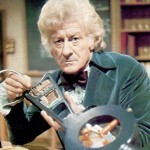 Jon Pertwee was known far and wide as a comic actor, and while he brings great moments of comedy to the part, his strength as a Doctor is that he mostly plays it absolutely straight, something made all the more impressive when you pay attention to the absolute gobbledegook he was often required to say. Most people's description of him revolves around his appearance: the ruffled shirts, velvet coats and other dandy fashions, or his height and shock of white curly hair, but once you start paying attention you realise that for this accomplished radio performer, his Doctor was all about the voice. Sure, the Drashigs may be glorified sock puppets with teeth, but when he says 'Drashig' in That Voice, there's a world of history and horror in his tone that makes you believe.
Jon Pertwee was known far and wide as a comic actor, and while he brings great moments of comedy to the part, his strength as a Doctor is that he mostly plays it absolutely straight, something made all the more impressive when you pay attention to the absolute gobbledegook he was often required to say. Most people's description of him revolves around his appearance: the ruffled shirts, velvet coats and other dandy fashions, or his height and shock of white curly hair, but once you start paying attention you realise that for this accomplished radio performer, his Doctor was all about the voice. Sure, the Drashigs may be glorified sock puppets with teeth, but when he says 'Drashig' in That Voice, there's a world of history and horror in his tone that makes you believe.
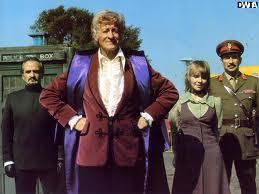 Things You Need To Know: In the War Games, the Doctor was put on trial by his own people for meddling in the affairs of lesser races. As punishment, he had his knowledge of time technology erased from his mind, and was sent into exile on Earth with a broken TARDIS. So naturally he spends the next several years interfering with lesser races. Time Lords really don't think things through, do they?
Things You Need To Know: In the War Games, the Doctor was put on trial by his own people for meddling in the affairs of lesser races. As punishment, he had his knowledge of time technology erased from his mind, and was sent into exile on Earth with a broken TARDIS. So naturally he spends the next several years interfering with lesser races. Time Lords really don't think things through, do they?
The majority of this era are contemporary stories, with mad science or aliens added. In the last two years of the five year run, the Doctor earned back his knowledge and freedom, and while much comedy was taken from his thwarted attempts to take his companions to specific times and places, he still had far more control of the TARDIS than previously seen – it might take him three goes to get back to UNIT HQ, but he would get there eventually! Still, it was contemporaries that ruled the day – UNIT stories were supposedly set a little in the future, though this is rarely evident apart from all those rampaging alien invaders and extra British space missions.
The sonic screwdriver is front and centre, as is the Doctor's yellow roadster Bessie.
The Companions: This is where it gets awesome! The Third Doctor is accompanied by three excellent and interesting women, each of whom have something unique to contribute to the show.
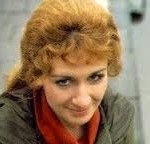 Dr Liz Shaw (Caroline John): with apologies to Zoe, Liz was the first companion who really came close to being an equal to the Doctor – as a fellow scientist, she was more of a partner to him than a helper. He still acts superior to her, of course, but considering that a large chunk of his superior knowledge has been erased, his reach far exceeds his grasp, which leads to some good comedy moments. On the whole, the trio that is the Third Doctor, Liz and the Brigadier was very promising, even if they only had four stories with which to work. The official story is that the production team gave Liz the chop because her smarts got in the way of explaining the tricky stuff to a dimwitted audience – she and the Doctor would natter happily away about particle physics instead of her saying 'what's happening, Doctor?' Which is silly, really, because saying 'what's happening, Doctor?' was totally the Brigadier's job.
Dr Liz Shaw (Caroline John): with apologies to Zoe, Liz was the first companion who really came close to being an equal to the Doctor – as a fellow scientist, she was more of a partner to him than a helper. He still acts superior to her, of course, but considering that a large chunk of his superior knowledge has been erased, his reach far exceeds his grasp, which leads to some good comedy moments. On the whole, the trio that is the Third Doctor, Liz and the Brigadier was very promising, even if they only had four stories with which to work. The official story is that the production team gave Liz the chop because her smarts got in the way of explaining the tricky stuff to a dimwitted audience – she and the Doctor would natter happily away about particle physics instead of her saying 'what's happening, Doctor?' Which is silly, really, because saying 'what's happening, Doctor?' was totally the Brigadier's job.
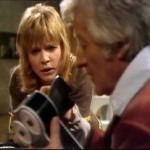 Jo Grant (Katy Manning): the most iconic of the Third Doctor's companions, she was sweeter and ditzier than Liz, though still very cute and with a great sense of adventure. An espionage graduate with a habit of bumping into things and causing havoc, her best talent was escapology, which was handy because she and the Doctor were constantly getting locked up, tied up or both. Luckily for her, the Doctor's exile was rescinded in her final season as companion, which meant that she got to travel in time and space as well as having adventures on Earth. Jo developed ongoing relationships with many other characters as well as the Doctor, thanks largely to the format of the show at this time, and was friendly with the Brigadier, Benton, Mike Yakes and even to some extent, the Doctor's "best enemy" the Master. This era is often referred to as the UNIT family, because of the way the ensemble supporting cast was used.
Jo Grant (Katy Manning): the most iconic of the Third Doctor's companions, she was sweeter and ditzier than Liz, though still very cute and with a great sense of adventure. An espionage graduate with a habit of bumping into things and causing havoc, her best talent was escapology, which was handy because she and the Doctor were constantly getting locked up, tied up or both. Luckily for her, the Doctor's exile was rescinded in her final season as companion, which meant that she got to travel in time and space as well as having adventures on Earth. Jo developed ongoing relationships with many other characters as well as the Doctor, thanks largely to the format of the show at this time, and was friendly with the Brigadier, Benton, Mike Yakes and even to some extent, the Doctor's "best enemy" the Master. This era is often referred to as the UNIT family, because of the way the ensemble supporting cast was used.
Jo is in many ways the template of the modern companion – especially in her final story, The Green Death, where she not only gets one of the most credible romances of Classic Who, but gets enough character development that we can see why she chooses to leave the Doctor's side: not just because of dishy Cliff, but also because she has grown into her adult self and her priorities are shifting away from her role as companion. It's worth noting this because companion leaving stories are one aspect of New Who that have been consistently mishandled, despite the extra focus on characterisation and family context that we get in the new show – it feels at times as if the writers can't imagine companions wanting to leave the Doctor under ordinary circumstances, and so have to create some giant life-changing drama out of it.
Replacing Katy Manning's Jo would have been a daunting task for the production team, possibly on par with the modern team trying to find a replacement for Rose. Luckily for Barry Letts and his crew, the perfect actress crossed their path, to present a character who would not only be a huge contrast to cute, funny Jo, but would herself come to represent the quintessential Doctor Who Companion…
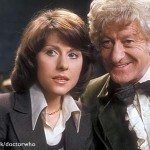 That's right, we're talking about Sarah Jane Smith (Elisabeth Sladen). Though she only had one season of five stories with the Third Doctor, she would go on to be one of the most longstanding companions with the Fourth, and later be the first Classic character to be reintroduced to New Who, as well as getting her own kids TV spin off show at the ripe old age of 60. Sarah was introduced as a far pricklier, more independent character than Jo, and while she later did her fair share of sailing around saying 'what's happening, Doctor?' and screaming, her first story is one of her best. In The Time Warrior we are introduced to her as a journalist trying to investigate missing scientists by stealing her aunt's identity, and even after she has accidentally stowed away in the Doctor's TARDIS and ended up in a real medieval castle, she is convinced for some time that he is the villain, and tries to stir up a revolt against him. Bonus awesome points for the moment that she tries to introduce feminist concepts to a kitchen full of women. "You're all living in the Middle Ages!"
That's right, we're talking about Sarah Jane Smith (Elisabeth Sladen). Though she only had one season of five stories with the Third Doctor, she would go on to be one of the most longstanding companions with the Fourth, and later be the first Classic character to be reintroduced to New Who, as well as getting her own kids TV spin off show at the ripe old age of 60. Sarah was introduced as a far pricklier, more independent character than Jo, and while she later did her fair share of sailing around saying 'what's happening, Doctor?' and screaming, her first story is one of her best. In The Time Warrior we are introduced to her as a journalist trying to investigate missing scientists by stealing her aunt's identity, and even after she has accidentally stowed away in the Doctor's TARDIS and ended up in a real medieval castle, she is convinced for some time that he is the villain, and tries to stir up a revolt against him. Bonus awesome points for the moment that she tries to introduce feminist concepts to a kitchen full of women. "You're all living in the Middle Ages!"
Another of those much-maligned stories by fans which I personally adore is the Third Doctor's last adventure, Planet of the Spiders. Sarah Jane is as strong here as she was in her introduction (conventional fan wisdom, I think inspired by comments by Sladen herself, is that Sarah was never again allowed to be as feminist and independent as in her first stories, which is partly if not wholly true) and I love that it is made clear that she continues with her career as a journalist despite occasionally flitting around planets with the Doctor.
 The UNIT family of course does not consist of just the Doctor and the women who pass him test tubes and tell him how brilliant he is (an actual quote, there). We also have the men who play the supporting cast: The Brigadier (Nicholas Courtney), Sgt Benton (John Levene), Lt. Mike Yates (Richard Franklin) and the Master (Roger Delgado).
The UNIT family of course does not consist of just the Doctor and the women who pass him test tubes and tell him how brilliant he is (an actual quote, there). We also have the men who play the supporting cast: The Brigadier (Nicholas Courtney), Sgt Benton (John Levene), Lt. Mike Yates (Richard Franklin) and the Master (Roger Delgado).
The Brigadier gives the Third Doctor a laboratory and the title of UNIT's scientific adviser during his exile – theirs is often portrayed as a prickly relationship with the Brigadier being pompous and wanting to blow all the aliens up, and the Doctor being pompous and wanting to create peace between humans and aliens, but to be honest the Brig is pretty accommodating of the Doctor's foibles and the Doctor is not averse to blowing things up himself.
Benton makes the tea. He's a cutie pie. Mike Yates is the rather dull officer who suddenly gets a plot arc in the final year, beginning with a stint undercover in the Green Death, moving through betrayal of UNIT in Invasion of the Dinosaurs, and a redemption of sorts in Planet of the Spiders.
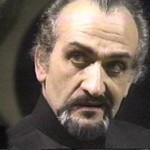 The Master is worth mentioning as well, an important character introduced here in Terror of the Autons as a member of the Doctor's race and his best enemy. Played brilliantly by Roger Delgado, this villain became a regular staple of the UNIT family years, regularly being captured and escaping in order to villainate for another day. It's possibly true that he was overused, but considering that the actor was to die quite tragically within a couple of years, I'm rather glad we got as much Master action as we did. The character of course was regenerated over the years and there have been many splendid Masters, especially those played by Anthony Ainley, Derek Jacobi and John Simm, but Roger Delgado is the reason the character was iconic enough to bother bringing back. Suave, intelligent, and so evil it hurts. Even when his plot was ridiculous, he rose above it with grace and style.
The Master is worth mentioning as well, an important character introduced here in Terror of the Autons as a member of the Doctor's race and his best enemy. Played brilliantly by Roger Delgado, this villain became a regular staple of the UNIT family years, regularly being captured and escaping in order to villainate for another day. It's possibly true that he was overused, but considering that the actor was to die quite tragically within a couple of years, I'm rather glad we got as much Master action as we did. The character of course was regenerated over the years and there have been many splendid Masters, especially those played by Anthony Ainley, Derek Jacobi and John Simm, but Roger Delgado is the reason the character was iconic enough to bother bringing back. Suave, intelligent, and so evil it hurts. Even when his plot was ridiculous, he rose above it with grace and style.
Feminist Heroes: Liz Shaw, Sarah Jane Smith
Best Stories To Watch:
 Title: Spearhead From Space [1970]
Title: Spearhead From Space [1970]
Featuring: the Third Doctor, Liz Shaw, the Brigadier and Benton, Autons!
Why Watch: Shot on film because of strike action, this is probably one of the best looking of any Classic Who stories. Jon Pertwee's debut as the Doctor shows off exactly what his performance will entail: comedy, action, gravity and mad science. Liz and the Brigadier are introduced strongly, and there's a great new villain in the form of the Autons and the Nestene consciousness. This story is a lesson in how to reboot Doctor Who for the next generation of viewers, and it's fascinating to see what RTD and Steven Moffat took from it.
Category: Contemporary, Mad Science
If You Like This You May Like: Inferno, a brilliant and high tension parallel world story, which works best if you're more familiar with the regular cast already. I also very much like The Silurians, which introduces you-know-who, has a guest appearance by Paul Darrow, and shows the conflict between the Brigadier's world view and that of the Doctor at its most effective.
 Title: The Green Death [1973]
Title: The Green Death [1973]
Featuring: the Third Doctor, Jo Grant, Brigadier, Benton, Mike Yates,
Why Watch: This is probably the most emotionally satisfying of the Classic Who stories – while it may be odd to recommend the last Jo Grant story as her best, it's one which works on many levels, with a great mix of romance, banter, action, tragedy, environmental politics and evil computers. Not only does Jo get her coming of age story, but we also see the Doctor at his madcap best, and the subplot of having to deal with Jo growing up and away from him, and characters like the Brigadier also have some excellent scenes. Plus, um, it's the one with the giant maggots. Also I defy you to not have a tear in your eye in the final scene.
Or Not: If you have a phobia about maggots, this isn't the one for you. Because of the giant maggots. Also there's a prop of a giant fly which… let's face it, the story is improved if you close your eyes during that part.
Category: Contemporary, Mad Science
If You Like This You May Like: The Three Doctors, Carnival of Monsters
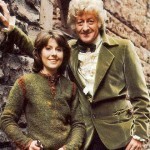 Title: The Time Warrior [1973-4]
Title: The Time Warrior [1973-4]
Featuring: The Third Doctor, the Brigadier, Sarah Jane Smith, Sontarans… well, a Sontaran
Why Watch: A great script and a great introduction of one of the most legendary Doctor Who companions. After the darling luvviness of the Third Doctor's relationship with Jo, it's a nice change to have a companion who (like Jo) was a bit more challenging of how wonderful he was… cough, a bit more of that would have worked with Martha, you know… and when Sarah does finally figure out that the Doctor is the good guy, they feel a lot more like allies than like a doting assistant and brilliant professor. Also the plot about an alien warrior crashing in medieval England and trying to screw with their society works very effectively, and the script is full of excellent dialogue.
Category: Contemporary, Historical AND Mad Science
If You Like This You May Like: Invasion of the Dinosaurs (apart from the dinosaurs), Planet of the Spiders (YES I LOVE IT I DON'T CARE WHAT YOU SAY)
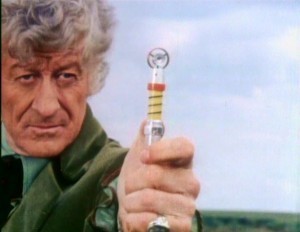
Honorable Mentions: Terror of the Autons, The Sea Devils and The Daemons are probably the best Master stories, and represent the UNIT family era very respectably. Day of the Daleks is a marvellous time travel paradox story which ties into the future where Daleks have invaded the Earth.
Previous Posts:
INTRODUCTION
THE FIRST DOCTOR YEARS 1963-1966
THE SECOND DOCTOR YEARS: 1966-1969

